Ep. 50: Our Dining Table, by Mita Ori & Deadpool Samurai, by Kasama and Uesugi
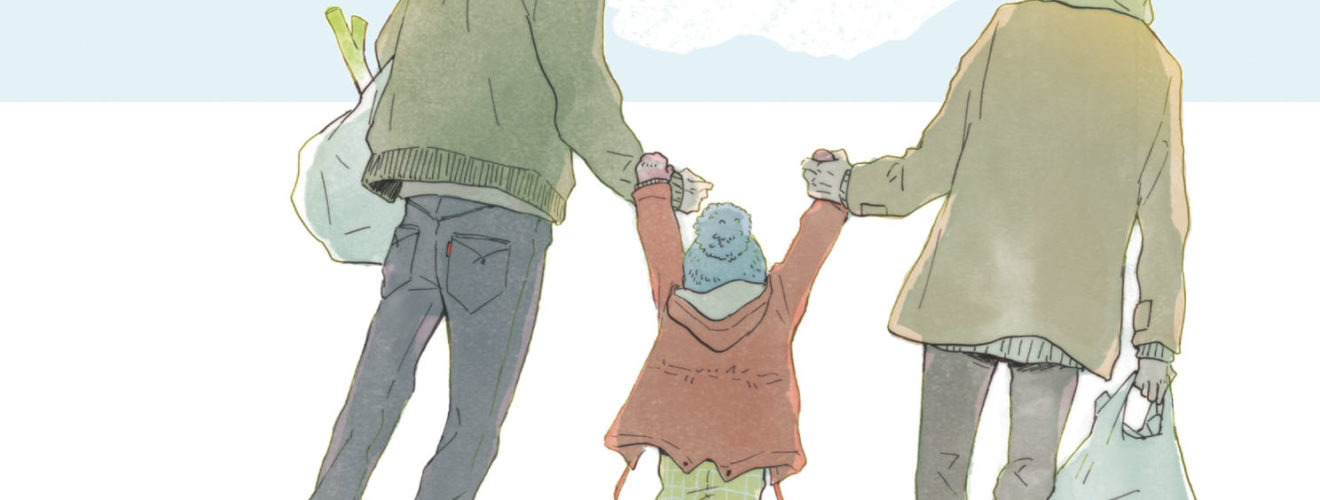
After two episodes talking about boys love manga, the gang finally reads an actual BL manga together! We start off with the short and sweet Our Dining Table by Mita Ori, but will it be ‘smexy’ enough to satisfy these very adult readers? This episode gets a little spicy, so it’s for older readers only! Plus in a #sponsored segment, we talk about Deadpool Samurai on a VIZ-sponsored Blind Date. After that, we answer a Question of the Week, and even do some shout-outs! It’s a jam-packed one-year-anniversary episode, enjoy!
Powered by RedCircle
IN THIS EPISODE:
00:00 Our Dining Table, by Mita Ori
57:30 VIZ Media Manga Blind Date: Deadpool Samurai Volume 1, by Kasama and Uesugi
1:10:00 Reader Q&A: How long does it take for a manga to get licensed and released in North America?
1:14:45 Shout Outs: TV, Manga, and More!
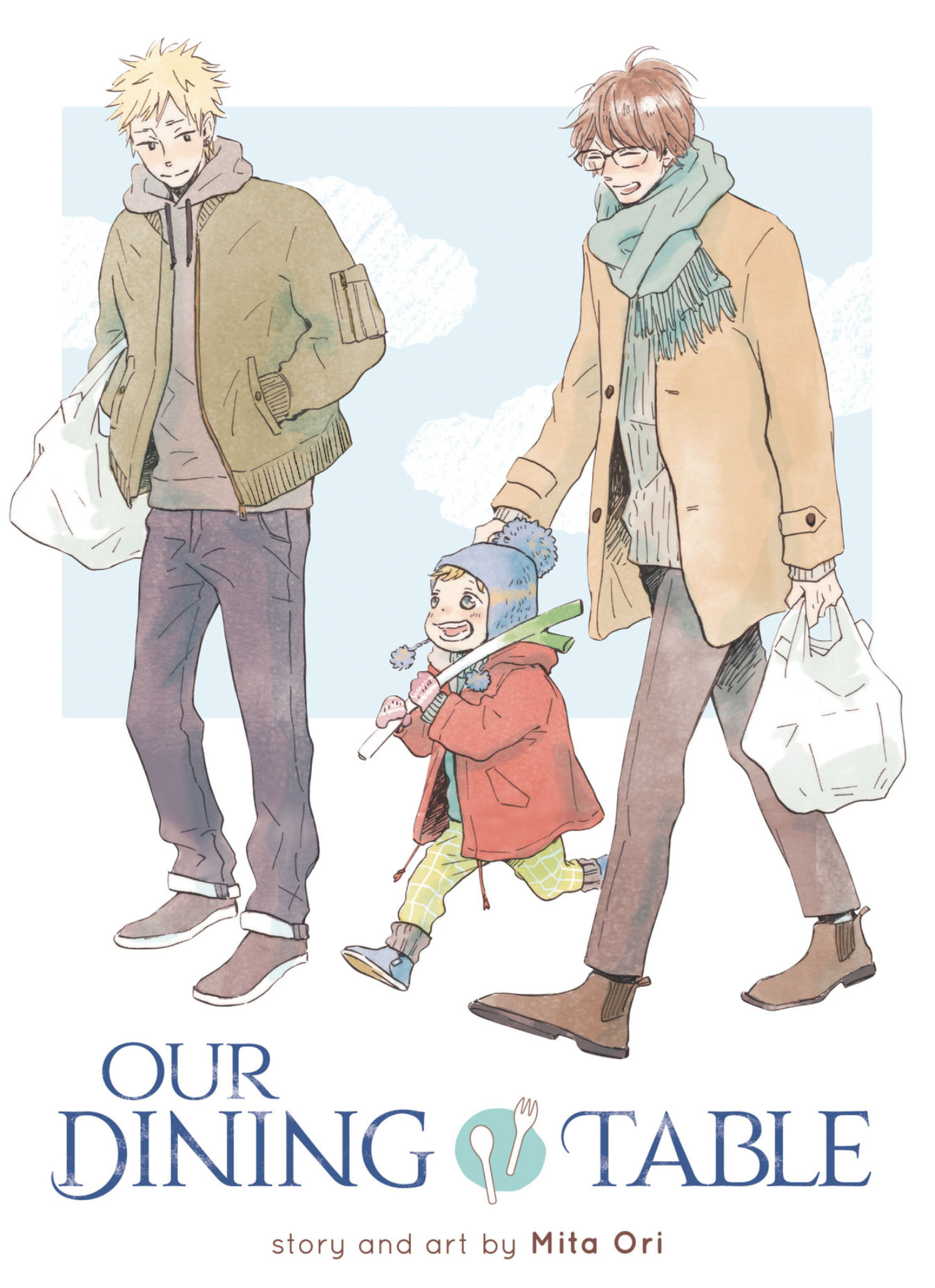
Our Dining Table
By Mita Ori
Translation by Amber Tamosaitis
Adaptation by Marykate Jasper
Lettering by Laura Heo
Edited by Jenn Grunigen
Published by Seven Seas (Print/Digital)
Show notes by Christopher Woodrow-Butcher and Deb Aoki. Audio editing by David Brothers
00:00 Before we get started:
This episode is rated R. There’s some sexy-times in the episode, and some sexy-ish images contained below. Viewer discretion advised, etc.
Hey, thanks everyone for your support of MSX: Mangasplaining Extra. We’ve launched our first two chapters of Okinawa by Susumu Higa, and the first chapter is available now, and it’s free for everyone to read. The second chapter is available only to paid subscribers (and content-wise, it’s a little heavier too). Maybe you’re even reading these very words on the Mangasplaining Extra newsletter, because we actually send these show notes as newsletters that get sent to your inbox, besides featuring it on our website. (/end MSX plug)
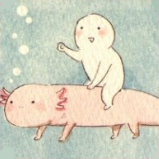
About Mita Ori (三田織) and Our Dining Table:
Mita Ori is a mangaka who works primarily in boy’s love (BL) manga, and that’s about all I could find about her in her official Instagram and Pixiv pages. Their only print publication in English is the single-volume Our Dining Table from Seven Seas. Mita-sensei just announced on her Instagram at Christmas that Our Dining Table will be adapted into a live-action drama, which is very exciting! Here’s the very cute image she posted, with Tane-kun continuing to cock-block the boys.
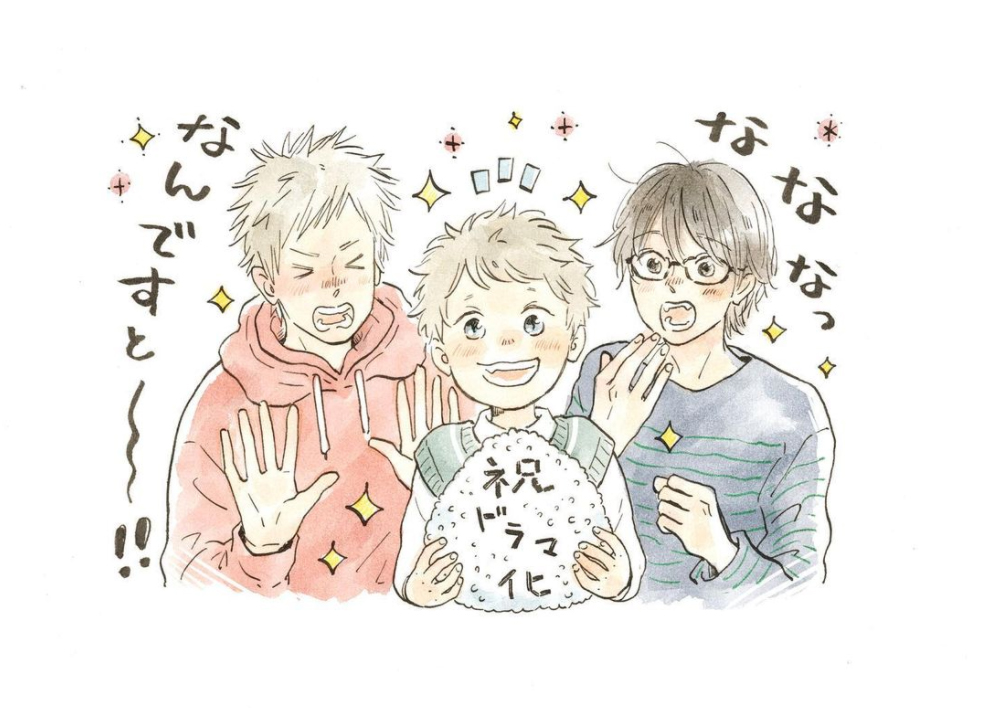
It’s worth mentioning that Our Dining Table was originally serialized by and published as a collection under the Rutile banner, from Japanese publisher Gentosha, the same publishing group/line that published the extremely popular BL manga Yarachin Bitch Club, available in English from SuBLime.
Interestingly, an earlier 2015 work by Mita Ori called Yamada and the Boy has been published digitally by Printemps Publishing, which is actually the Japanese publisher of the Canna Comics BL anthology manga. I don’t think I knew that Canna was publishing manga directly in English? That’s fascinating. BL really is its own publishing world.

Anyway, it looks like Canna is releasing their self-translated works in English exclusively on Amazon/Kindle/Comixology. Other Canna titles, like I Hear The Sunspot (One Peace Books), Boy Meets Maria, and Restart After Coming Back Home (Seven Seas Entertainment) have all been licensed as print and digital releases in English.
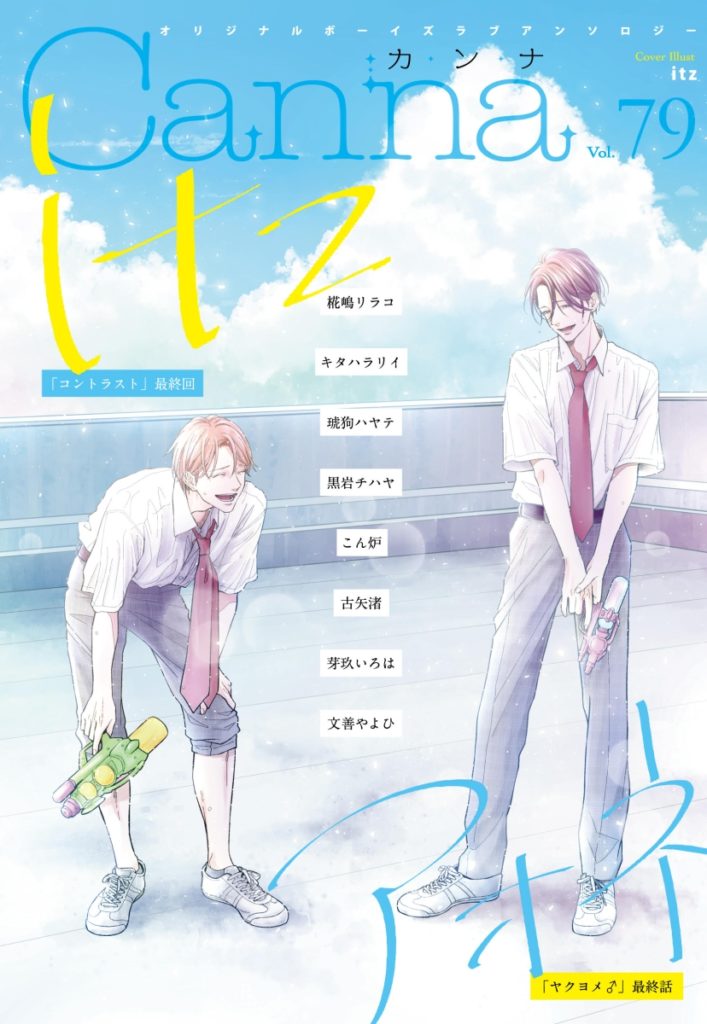
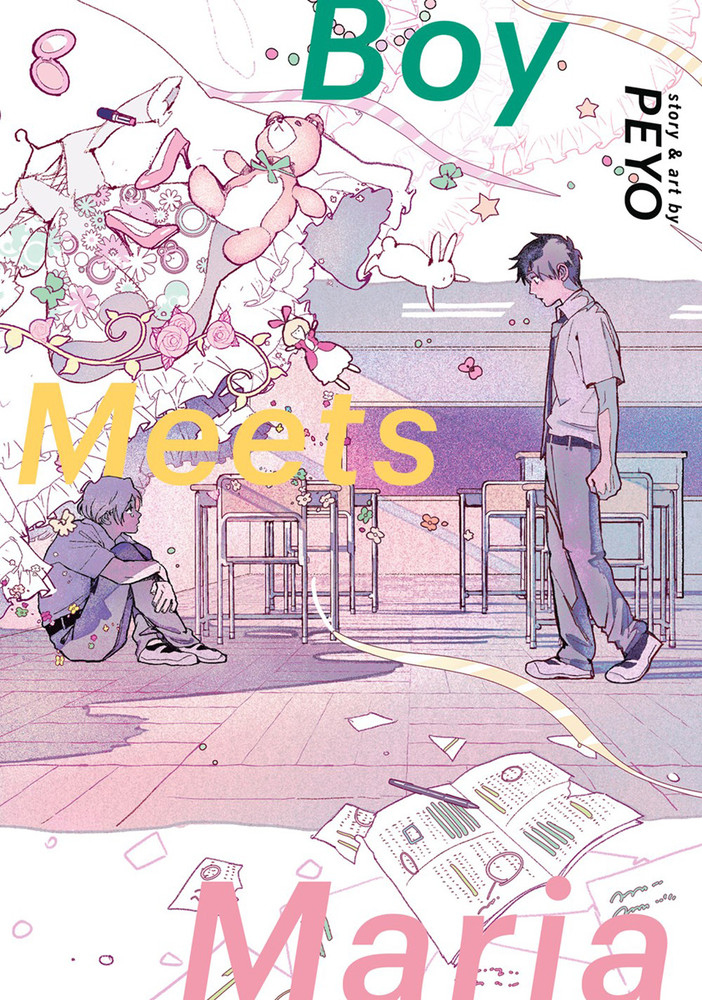
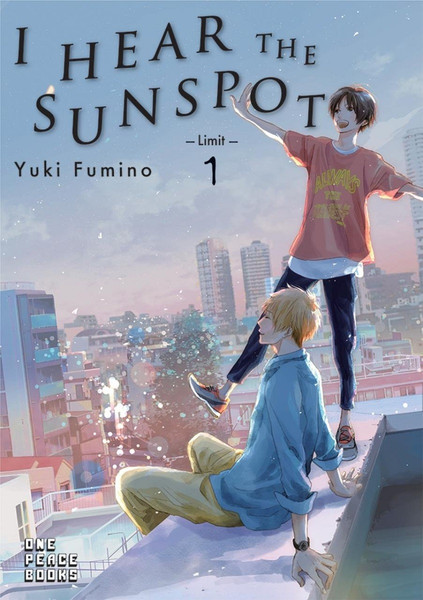
Mita Ori’s most recent serialized work is Lion Hearts, which she is in the midst of self-serializing for free on the Pixiv Comics web service. Looks like she started it a year or so after Our Dining Table, and new chapters have been coming out very slowly since then. It’s interesting to see more and more creators self-serializing their works via Pixiv, and then putting it out via publishing companies later. If anyone reading this has a link to an interview about the economics of BL manga and self-publishing situations right now, I’d love to read it! I do know that Mita-sensei does one-shot stories in Canna and other venues as well, but their output is slow enough that I’d wager they either have another full-time job outside of comics, or are working in a different area of the manga industry under a different name.
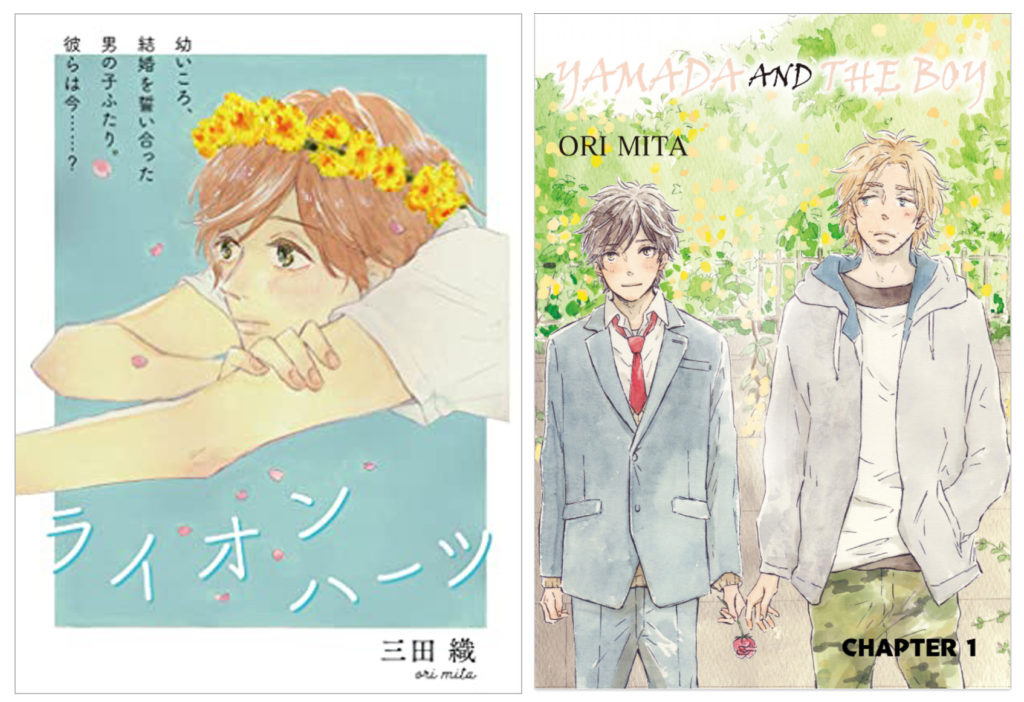
Finally, we didn’t talk about piracy this episode, and we probably should have. In doing the research for the above, so many pirated versions of all of these titles came into view, often higher in the search rankings than the legitimate, licensed editions.We’ll make a point to discuss this in upcoming BL-themed episodes in Season 3, but I’m pretty sure that the ratio of readers who pirate manga to paying readers is worse for BL than any genre of manga, and therefore any kind of comics, period. Being primarily aimed at a female readership, attracting a younger audience than the age restrictions on this sort of content might allow, being ‘smutty’ and therefore embarrassing to have/buy/read, all of this contributes to a rough, rough time legally publishing (and profiting from) BL manga, but the origins of BL in North America are undeniably tied to pirated material. We’ll have more to say on that in future episodes, but I didn’t want to let it go unobserved.
01:50 Hey, let’s talk about boy’s love manga for a second.
Please take this with grain of salt, because as a gay dude I am not a member of the intended audience for, or creators of, this genre, which is mostly straight women, mainly in Japan.
[Deb:] Though yes, we know that there are both straight and gay male fans of boys love manga (fudanshi) too. Heck, there’s even manga about them, The High School Life of a Fundanshi by Atami Michinoku, also available from Seven Seas Entertainment.
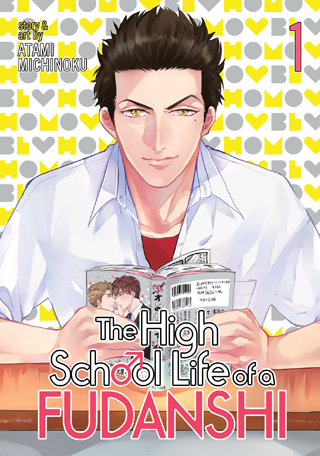
[Christopher:] So shojo (girls’) manga in the early 1970s started to feature stories about romances between male characters, inspired by European literature (and the movies that would adapt these stories), and other inspirations (like TV shows and music). Two ethereally beautiful boys at boarding school, tragic pasts, doomed romance, you know the score. The Heart of Thomas by Moto Hagio (published by Fantagraphics, now back in print!) is a great example.
A huge segment of fandom ate this up, the BL genre started to become popular. The fandom for this material began to produce their own stories, sometimes featuring existing, popular characters, sometimes all-new characters and stories, and self-published them as doujinshi (basically just Japanese for ‘self-published books’, meaning comics in this context).
While shojo manga magazines would run BL-themed stories occasionally, they’d need to be pretty chaste, overall, to fit into that publishing paradigm. But the fan community of doujinshi publishing could allow works to be a lot ‘racier’, mirroring the male-oriented hentai material that was a part of the doujinshi scene at the time too. Eventually, the term ‘yaoi’ (In N. America, people pronounce it as yow-wee, tho “yah-OH-ee” is also correct) was used mainly to describe self-published and sexier work (“yaoi” is short for YAma nashi, Ochi nashi, Imi nashi – “no climax, no point, no meaning,” but eventually grew to envelope the entire genre, where not including a hot sex scene is more of a conscious decision than choosing to include one.
[Deb:] “No climax, no point, no meaning” basically implies “just the good stuff,” if you know what I mean (wink wink nudge nudge).
[Christopher:] The genre made its way to North America through publishers like Digital Manga Publishing/June Manga and Tokyopop (among others), publishing as much sexually explicit material as they could muster, though definitely gaining in intensity as time moved forward (both DMP and Tokyopop developed “Mature Readers’ (porn) lines to separate certain titles from their 16+ and 18+ rated ‘main line’ material. Honestly, these lines did pretty well, considering many outlets would refuse to stock them out of homophobia, misogyny, or just fear of their community standards (the latter informed by the former). The genre ended up being subject to the manga bust of the mid-2000s, new publishers (and imprints) entered the field, and now we’re back to a sort of equilibrium with regular releases, both in print and in digital.
‘Yaoi’ is the term in wider use because the term “boy’s love” does have some underage connotations, but for the most part, protagonists in these stories tend to be older teens or adults, like high school age and older, especially for works in translation to English that veer to the sexier side of things, because of like, it’s the law. But honestly, many BL stories, even with sex scenes, aren’t any more explicit than a lot of YA novels. It’s just about two dudes (which makes some people very nervous), and there are pictures of them too (so that makes some people even more nervous.)
Meanwhile, “BL” as a term has been picking up steam. Most Japanese bookstores I’ve visited that have manga have very large, branded “BL” sections. Perhaps that’s the ‘appropriate’ name for the genre to the general public? Either way, the genre is enormously popular in Japan (and throughout the world too). It’s a real sales driver for the whole industry–which is hilarious because publishing in Japan tends to be a very conservative industry…!
Anyway, this is a huge simplification of a massive, sprawling genre, with more words written about it than I’ll write in a lifetime. The Wikipedia article for yaoi/BL/etc. has been EXTENSIVELY edited and noted, probably because of the exact sort of online pissing matches and misinformation I hinted at above, and seems to be a very good overview of the material. I learned a lot from reading it, and I already knew a lot, so it’s probably worth a look.
https://en.wikipedia.org/wiki/Yaoi
Also, here’s a couple of quick definitions of terms we use, but we don’t fully explain in this episode:
Doujinshi: Self-published booklets in Japan, often comics or short stories, but not only that. These are usually printed in short runs of 50-500 copies, although popular authors can sell thousands.
Original Works / Fan Works: An “original” work is one that doesn’t use any existing/copyrighted material, and tells an original story. It might use real people, sometimes, though? A “fan work” or “tribute work” is one that uses existing characters/scenarios, and tells new stories with those characters. Most doujinshi fall into the “fan work” category, and while these technically break copyright, creators and IP holders tend to look the other way as most creators of fan work are selling small numbers of copies, and developing their skills to enter the industry.
Seme / Uke: Seme (sey-mey) generally means ‘top’, and Uke (ooo-kay) generally means ‘bottom’, and almost every BL character is divided into these categories.
02:09 The first year anniversary is the “paper” anniversary, so as a gift we’re all getting each other more manga to read.
04:12 Can’t believe Chip forced that to stay in. He’s a monster.
5:00 Here’s the description of Our Dining Table from Seven Seas Entertainment:
Eating around other people is a struggle for salaryman Yutaka, despite his talent for cooking. All that changes when he meets Minoru and Tane—two brothers, many years apart in age—who ask him to teach them how to make his delicious food! It’s not long before Yutaka finds himself falling hard for the meals they share together—and falling in love!
Seven Seas Publishing Website
05:40 There’s no Nausicaä Problem, that was just a joke. But if you want to hear what the crew thought about Nausicaä, head over to episode 46. Spoilers: Only Christopher enjoyed it.
06:39 Deb mentions shoujo manga, or girls’ manga, and how this title has many of the same story beats as what you might find in a shoujo manga. We talk about it throughout the episode (and reference it up top), but it’s really important to mention that BL essentially grew out of shoujo manga fandom, and BL publishing and production is still closely linked with shoujo manga production in Japan in many ways. Everything from editors working on both sorts of series, to authors moving between BL and shojo (and josei and seinen manga), sometimes under a pseudonym. But BL has also grown into a formidable industry on its own, including many stand-alone publishers and imprints too.
10:14 The “omake,” or bonus content, of this volume is SO GREAT. The author gives really great insight into her process, and in doing so, she outlines what is ‘expected’ of BL manga and their creators. Here’s the page that Christopher specifically references. Later David references this page for the story elements the author alludes to, because David is far classier. I’ll try to just crop it down to the two things we mention, since this is a nice book to read and buying it would be a nice thing to do. 🙂
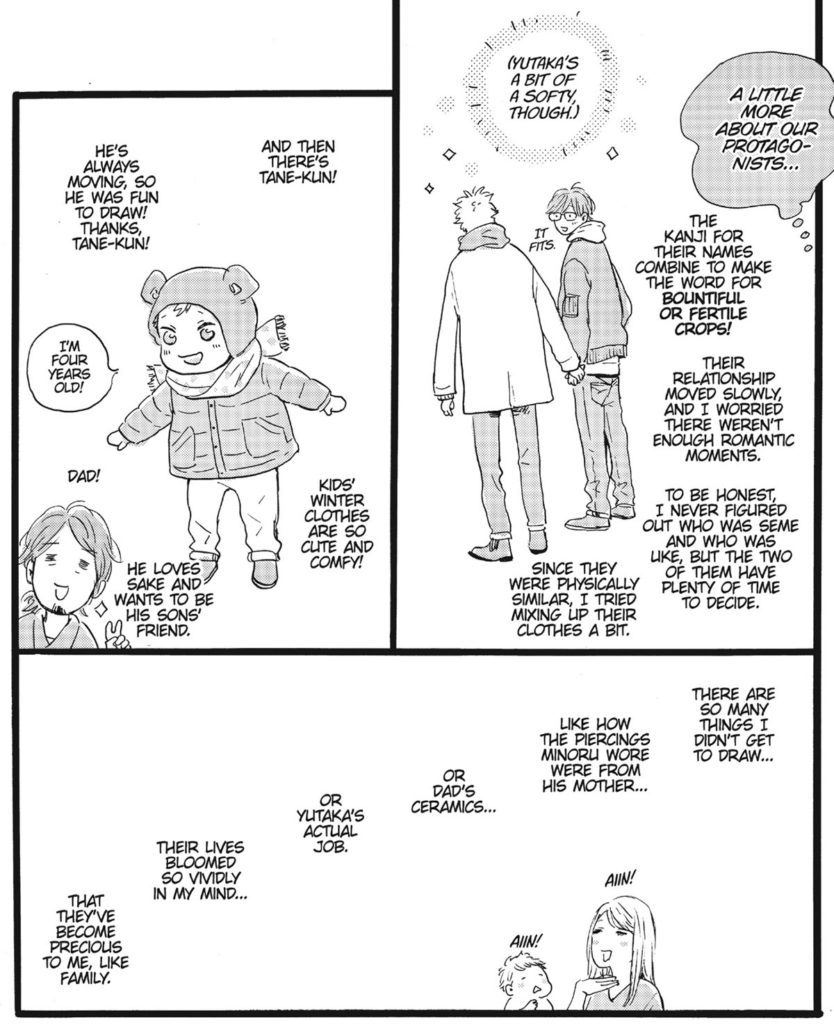
12:00 Chip just compared this BL manga to Christian Harlequin Romance!! So this is not your ‘typical’ risqué BL manga.
But don’t worry, I started reading Birds of Shangri-la for Season 3, and it’s absolutely full of sin. That’s gonna be a wild episode.
12:35 Chip DID find it for the show notes. Here’s Chip’s turn as a Harlequin Romance Cover model, and the comic strip he created about the experience!


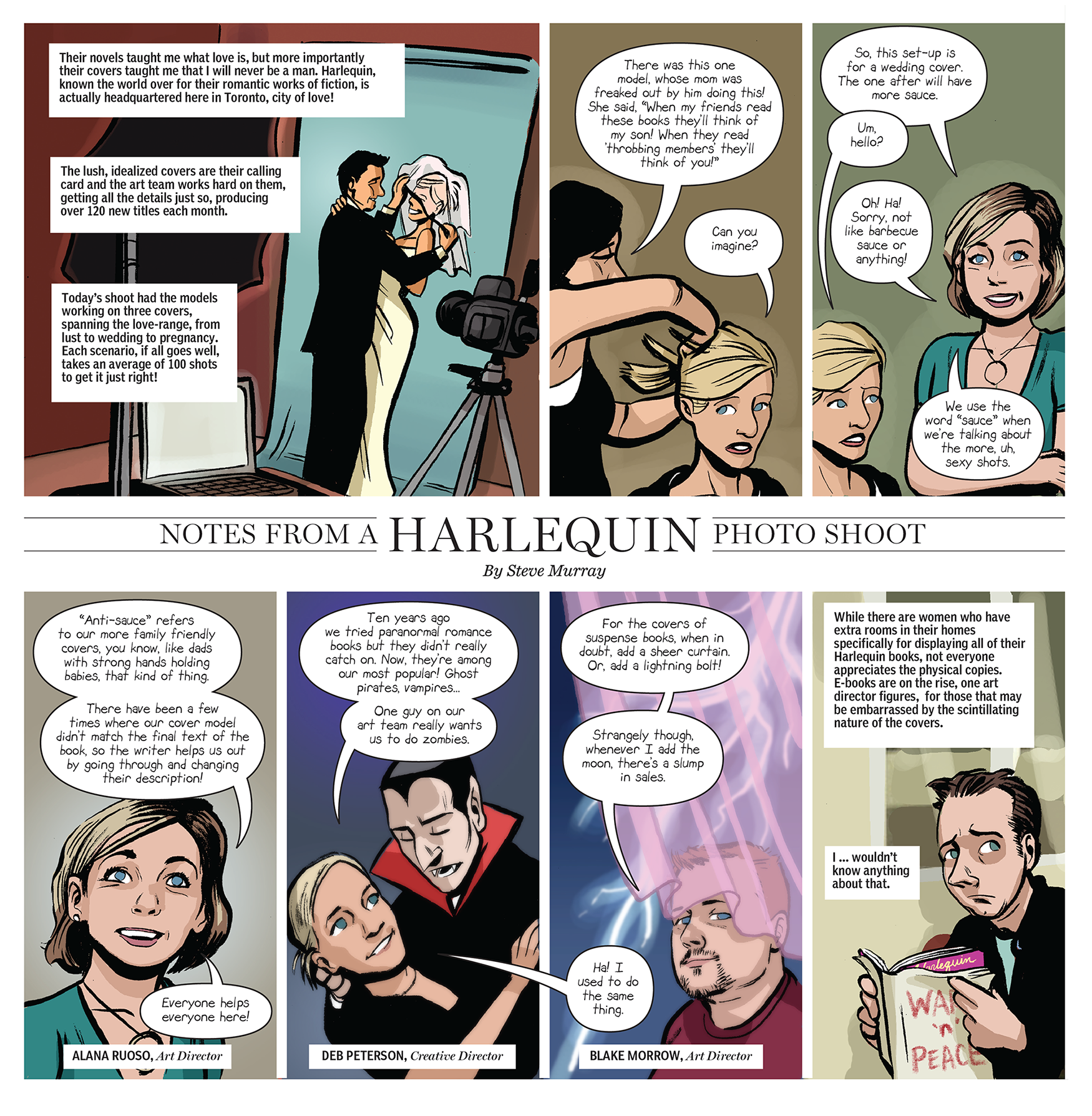
We are truly blessed that Chip has chosen to share this with us.
13:10 Shout-out to David for being equal-opportunity in not editing out our flubs. 😉
13:40 Did they or didn’t they? I realized when listening to the crew that everyone thought that they didn’t have sex or anything at the end, whereas I felt like the author took steps to leave exactly what happened up to the reader’s imaginations… maybe they just threw a blanket over Tane-kun or something. LOL
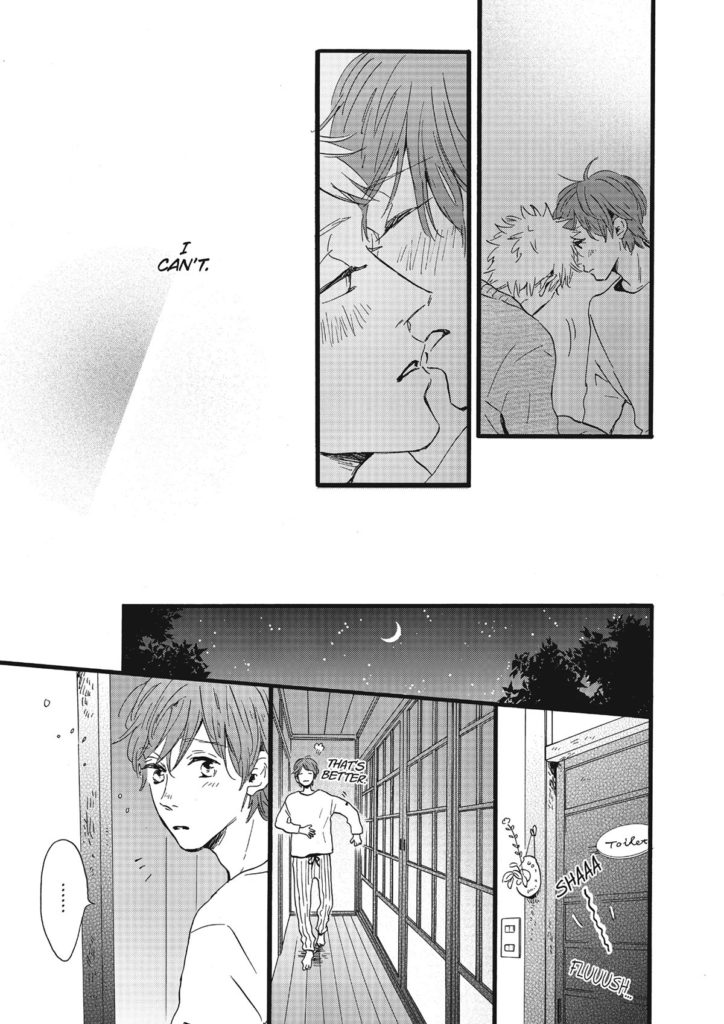
14:20 I was specifically referring to creators like Fumi Yoshinaga here, who has relatively chaste BL series, or even ‘gay’ seinen manga series like What Did You Eat Yesterday?, but ALSO creates limited edition doujinshi where her reasonably chaste characters have explicit, delightful sex scenes. I can’t find a way to link to this that isn’t also linking to scanlations, so, use your best Googling if that’s something you really wanna see.
15:10 So yeah, showing sexual organs is against the law in Japan, we talk about Japanese censorship in previous episodes, especially our BL Metamorphosis episode, but it didn’t quite come up this time out, except as this joke: Glowing Pillar Of Light Dick Censorship VS. Marvel Movie Sky Beams. Here’s a good article on how censorship of adult material works on BL, from barely-censored to fully whited-out, to simply not drawn at all. Fascinating stuff.

And here’s a Sky-Beam for contrast:

I think we’re onto something here.
15:41 Celery Man, featuring Paul Rudd. Classic of the internet, created for Tim & Eric Awesome Show, Great Job!
16:10 Tane-kun (tah-nay) is so cute in this book. They draw this precocious kid in the bonus material in like, silly food costumes. I should turn these into Instagram posts.
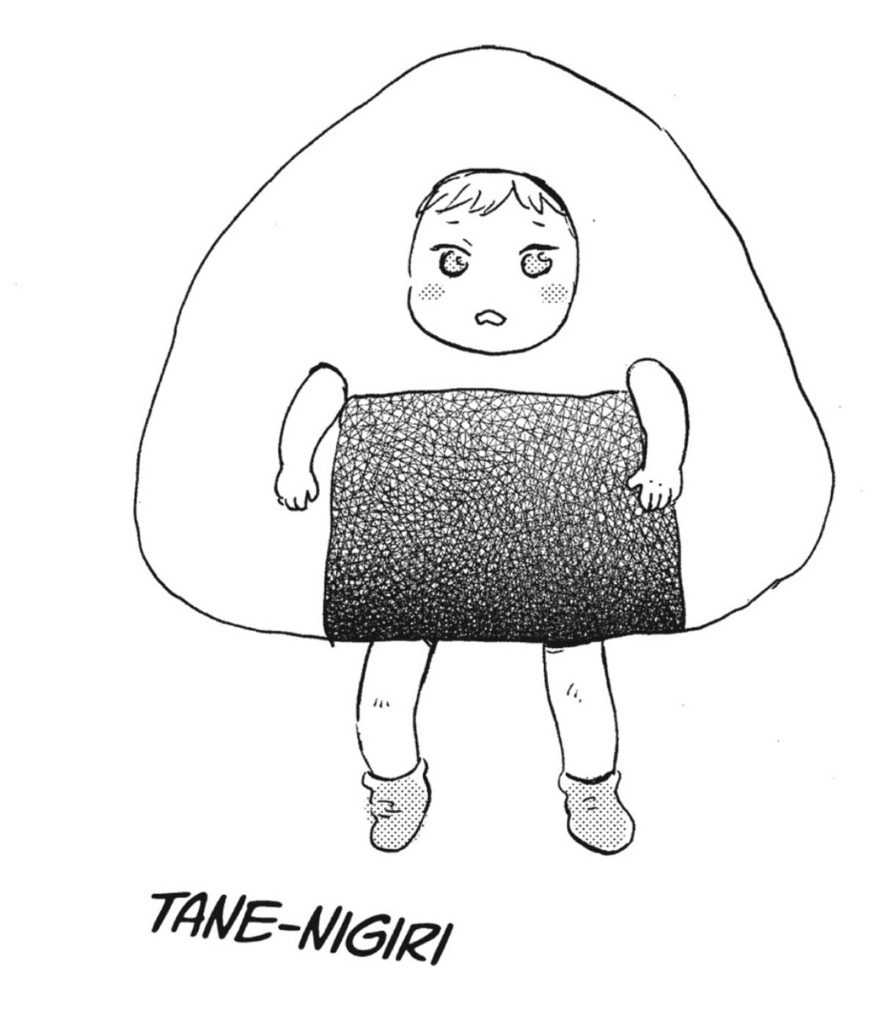
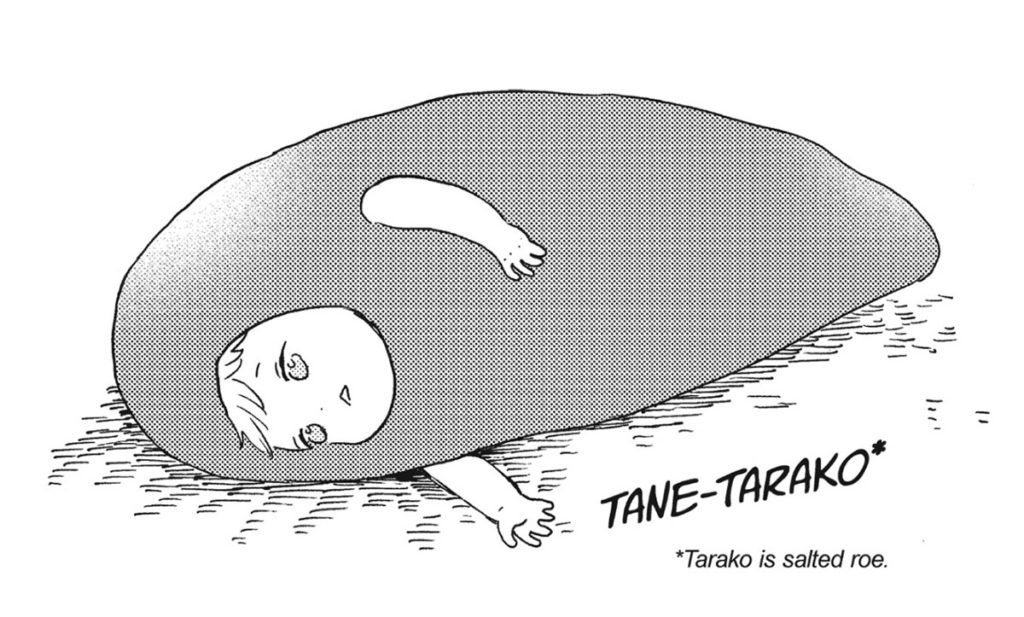
Oh, do you follow us on Instagram? Please follow us on Instagram. https://www.instagram.com/mangasplaining/
16:30 We all need a Jumbo. 😉
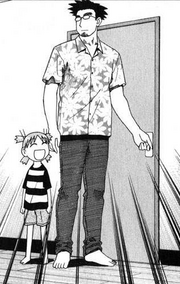
Honestly can’t tell if Chip forgot Jumbo was a character in Yotsuba&, but the joke worked.
[Deb:] If you need a refresher on who’s Jumbo, head over to our Yotsuba&! episode.
17:00 Chip calls out this sequence of Minoru putting the food directly into Yutaka’s mouth, as a method of building intimacy. It’s a great sequence.
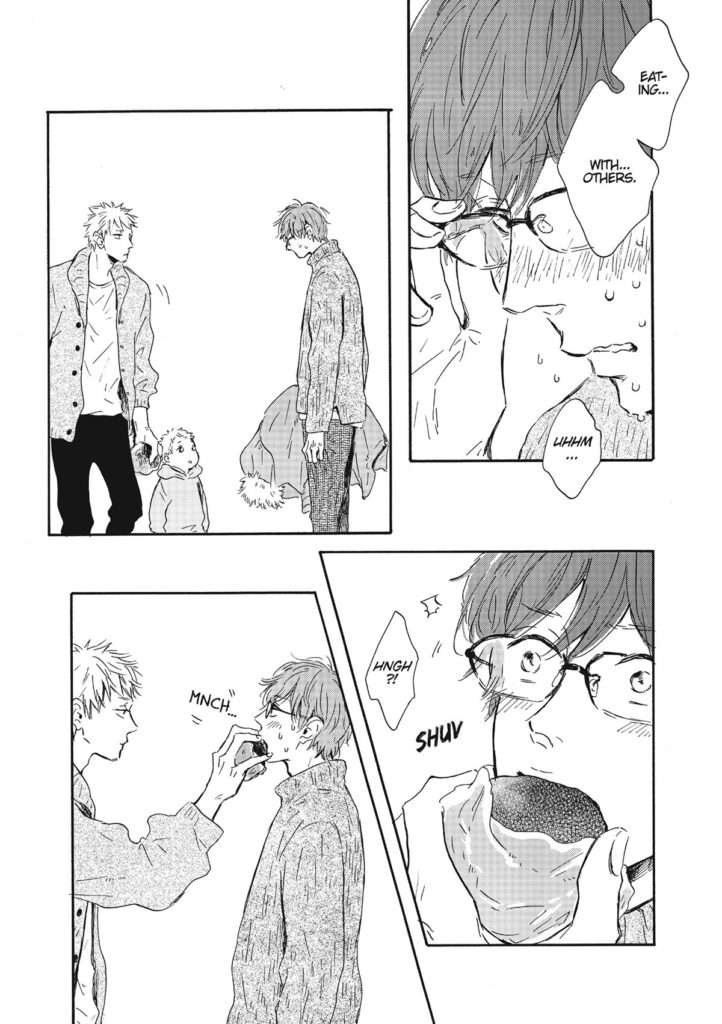
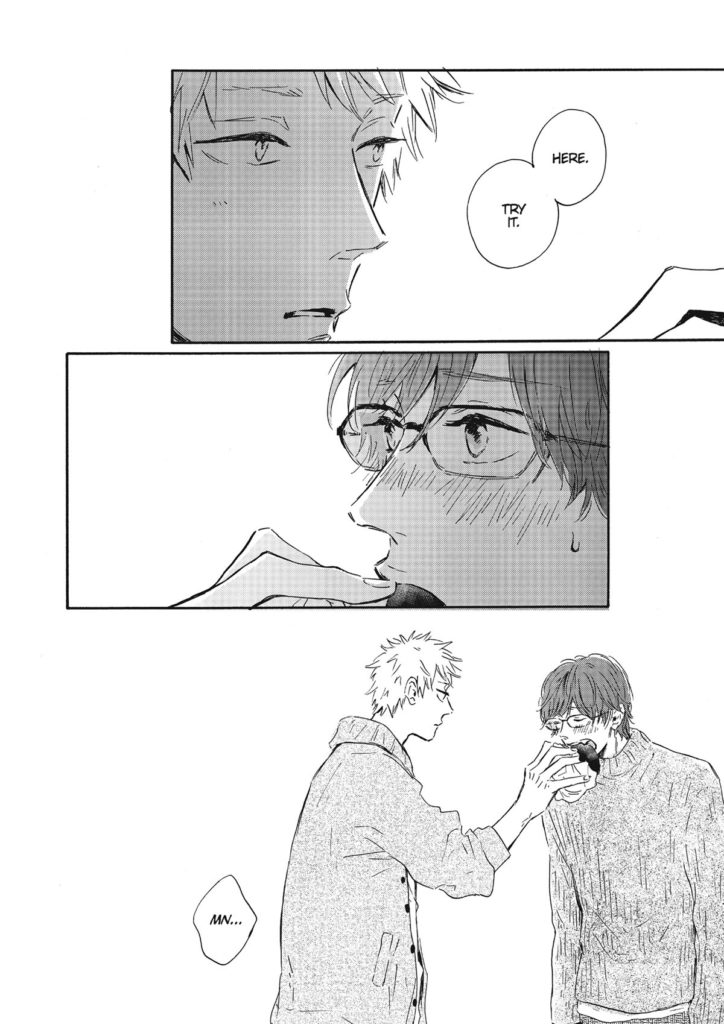
17:40 The first kiss is very sweet, but the author pulls a narrative fast one by running a 10-page sequence directly after that moment, explaining Minoru’s and Tane’s tragic backstories. When we pick up again, we see that Minoru has shared that backstory with Yutaka, but it’s really the kiss that’s still on Yutaka’s mind.
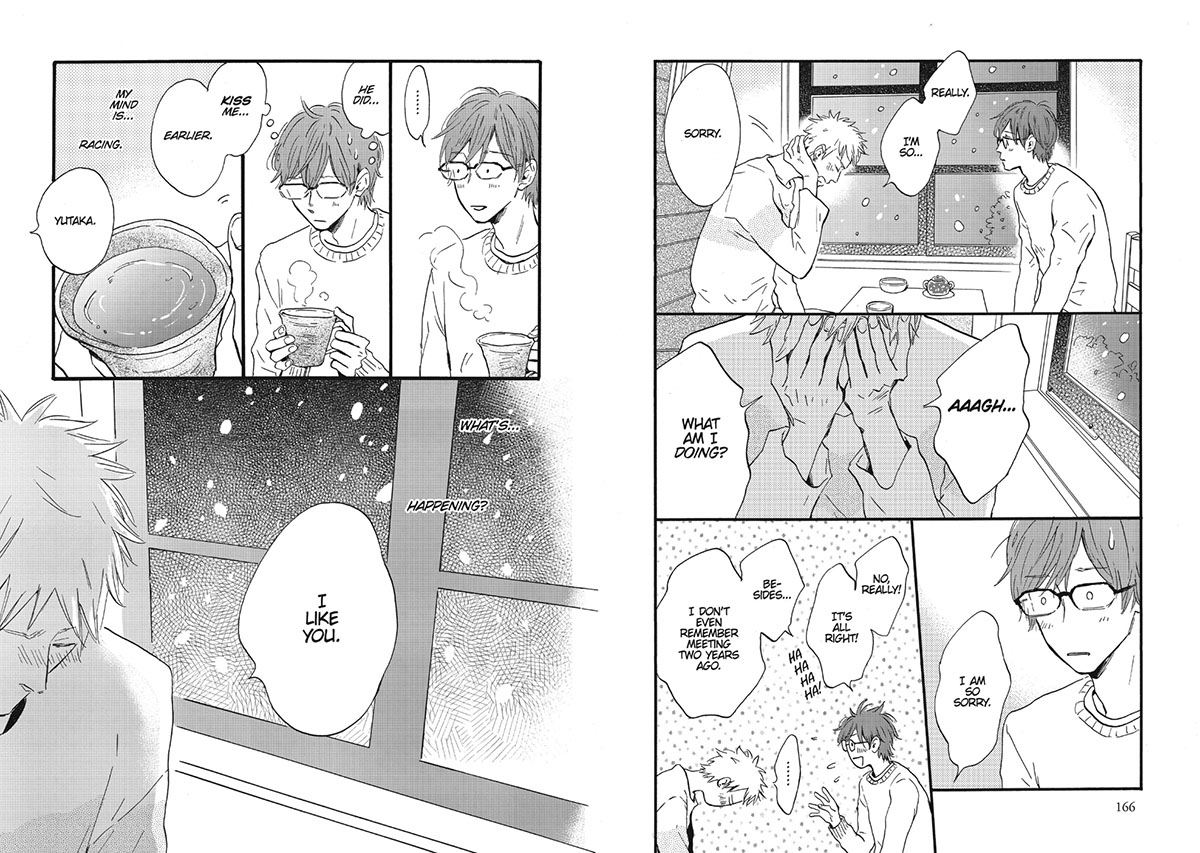
It’s interesting here because Minoru actually does a good job of vocalising how he feels at this point, but Yutaka is just too used to spending 100% of the time inside his own head to reciprocate verbally. In a sequence that follows, Minoru is even pretty clear that things need to go back to how they were before the kiss, wants to touch him one last time (in a ‘manly’ way), and Yutaka is just deer-in-the-headlights.
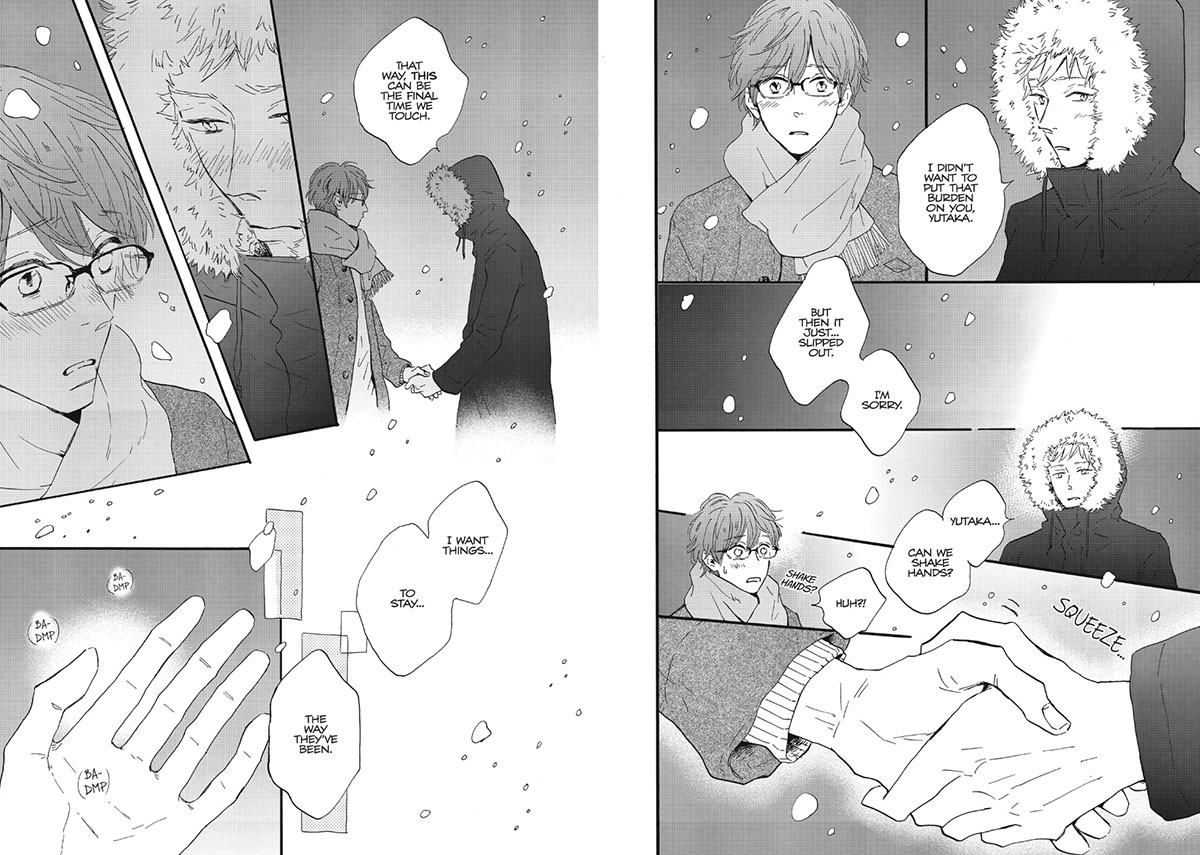
I will say that in the middle of the next chapter, they manage to get their feelings out to one another, and then deal with one of my favourite (more recent!) tropes in BL: Just because we got together, are we going to be able to stay together? What does it mean to your little brother who adores me if we break up? I thought it really resonated, especially in a romance context. And yeah, like all relationships, the situation could’ve been improved with a little more open communication, but in the context of this being a manga starring two heavily PTSD’d dudes who just admitted to themselves and each other that they were gay and in love with one another, it’s pretty forgivable. 🙂
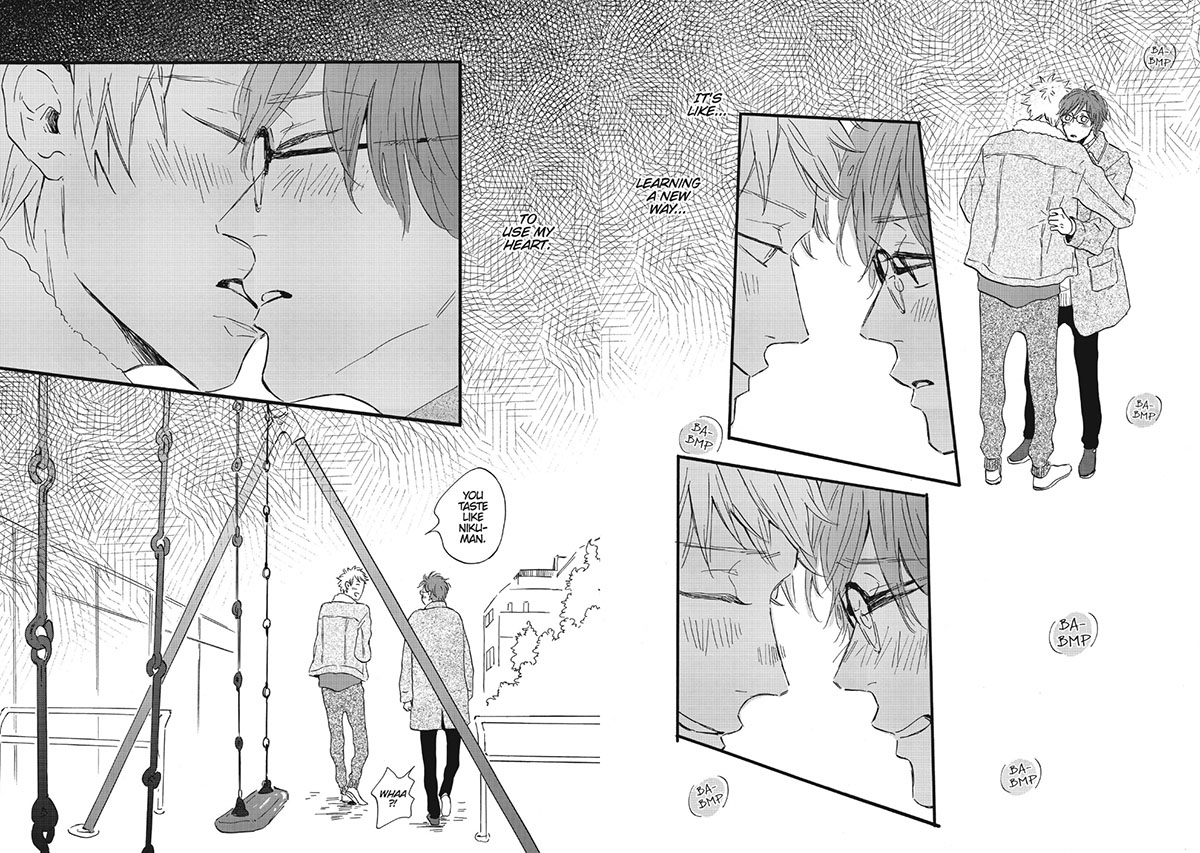
18:05 We’re all just trying to make sense of our lives in different ways.
21:45 Okay, mushy-stuff out of the way here, Tane-kun is just such a cockblock. Like Deb states in reaction to the panel on page 213, Yutaka’s got that “No sex tonight 🙁 frowny face” here that’s really funny, as Tane-kun separates the boys by sleeping between them.
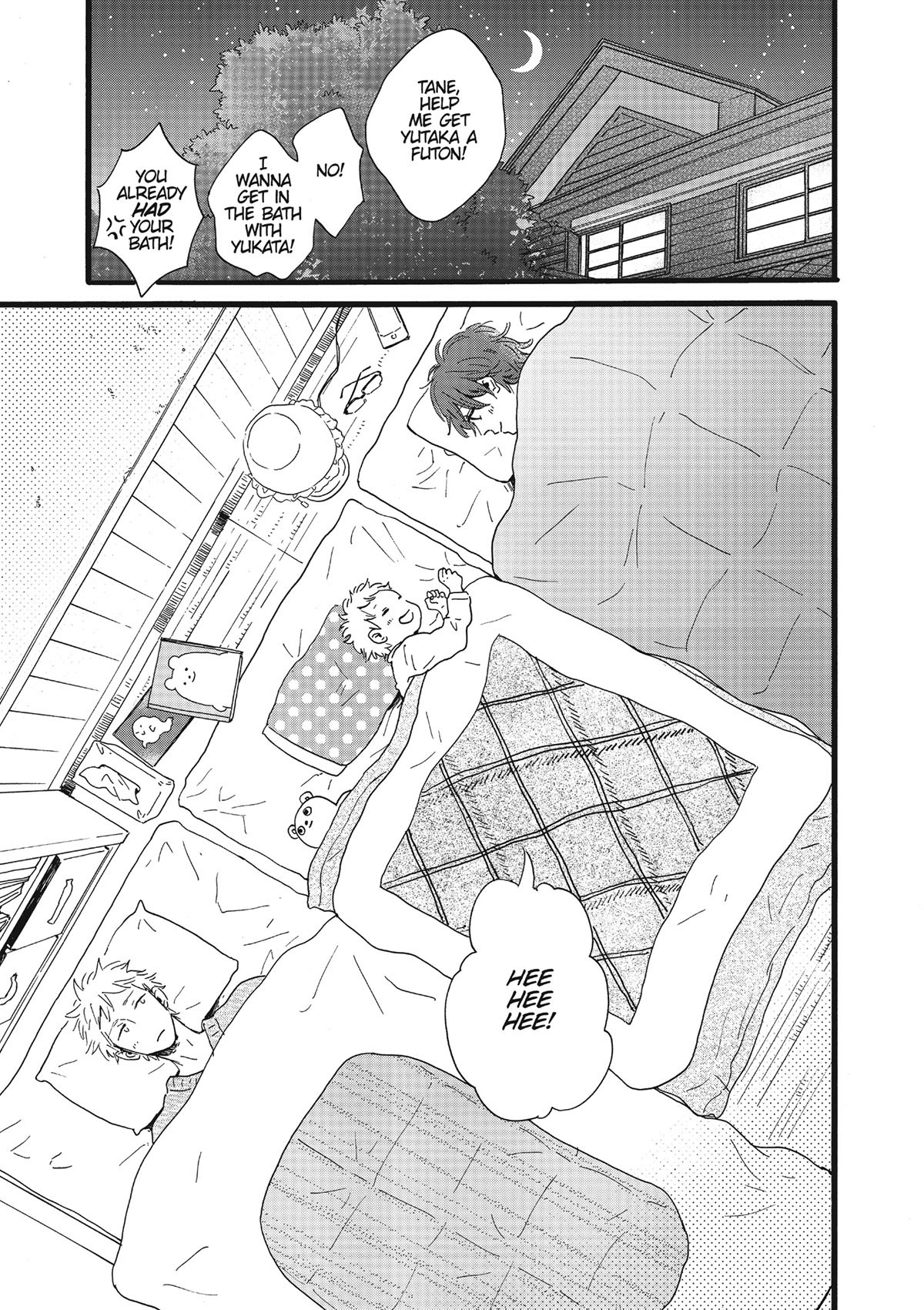
23:00 In BL manga, there usually is a ‘spoiler’ character, a third character that enters the scene once the primary obstacle for the protagonist has been overcome, and prevents the main characters from getting together (and thus keeping a popular manga going a little while longer). He’s usually younger, cuter/hotter, and ostensibly ‘more right’ for our protagonist character than the ‘opposite’ type character he’s attracted to. Not exactly the same as this situation (thankfully), but absolutely a little trope-y.
24:25 He’s an artist. You know how they are.
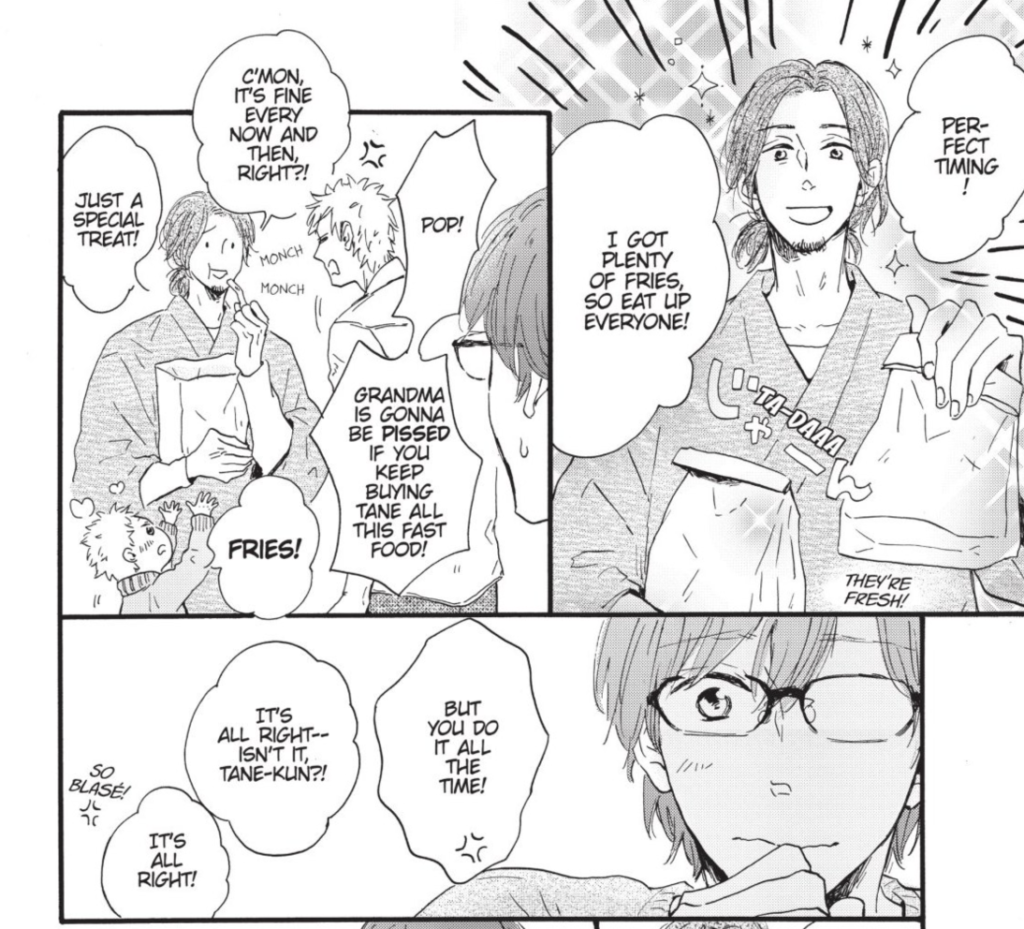
24:45 In talking about the artwork, the criticism that there’s only two illustrated ages of characters in this manga, Tane-kun and any other adult, lands pretty solidly. Minoru and his dad don’t look 20 years apart in literally any illustration.
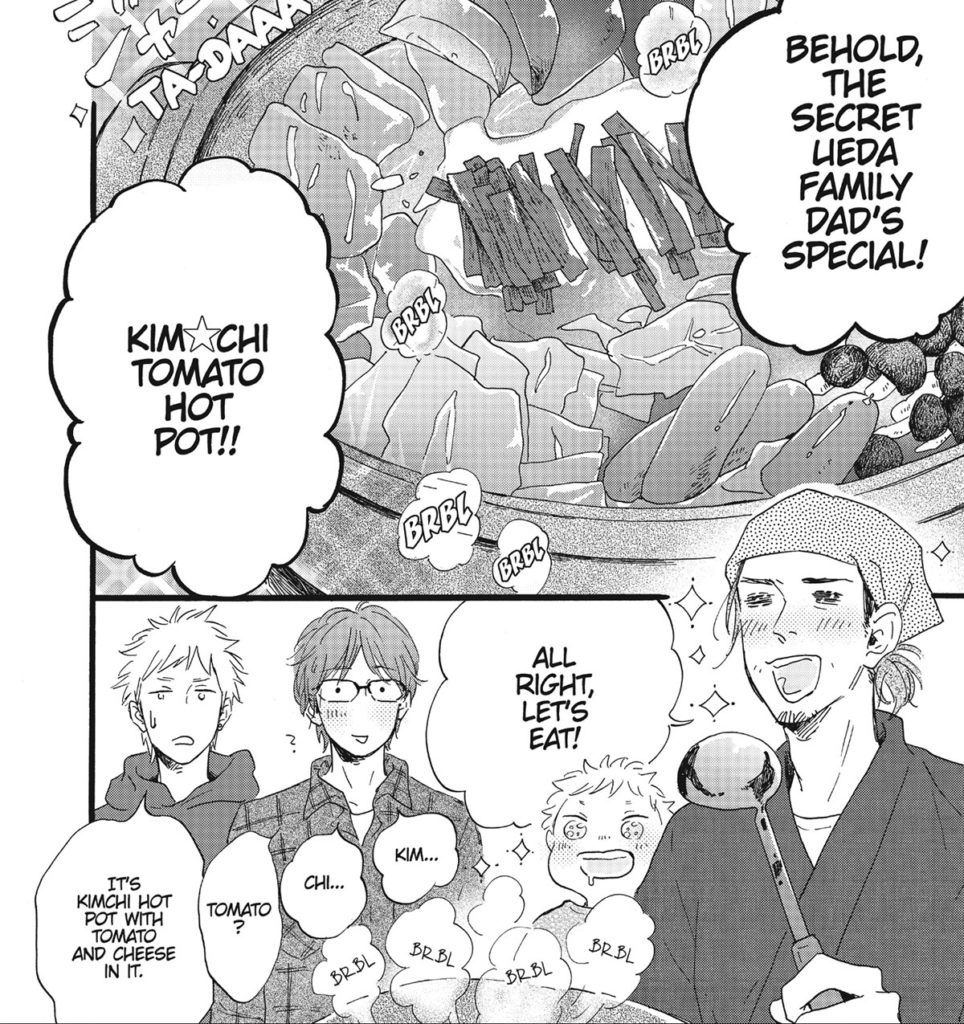
[Deb:] The Asian Aging Mystique is real. Thanks mom, love ya.
26:25 The chapter illustrations in this book are all actually very good. David specifically cites the artwork Chapter 4, page 123, which depicts some pretty typical bonennkai (end of year drinking party) behaviour, but with Tane and his Dad while Minoru and Yutaka are off sorting out their differences.
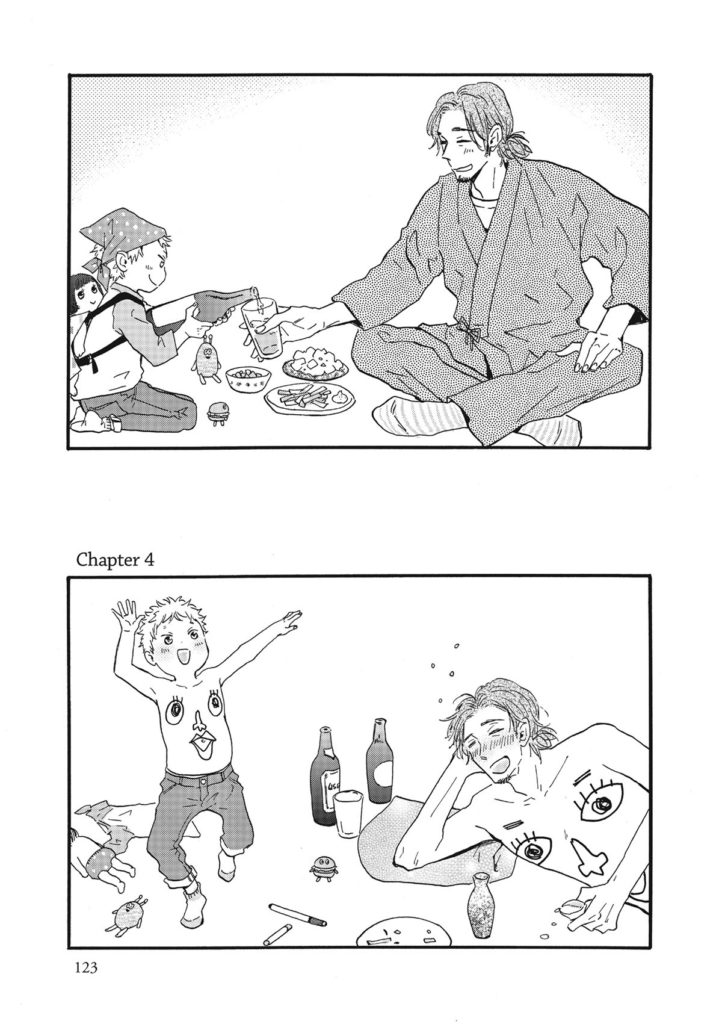
29:00 Zoro/Zolo x Sanji: No idea if this is the actual doujinshi to which David is referring, but you get the idea.

29:40 David also mentions the segment, which could’ve come across as cheesy, that’s illustrated using the style of Tane-kun’s crayon drawing of Yutaka as a little kid. I took it as crayons instead of pencils, but either way, I think it’s really good and highlights that the manga-ka is trying something very interesting here, more than I’ve seen in many BL manga which tend to be more artistically ‘consistent.’ Here’s part of that sequence, from page 138.
31:00 The rendering in this book IS a little rough. Messy screentones, and strange line weights, but also really lovely little touches like the puffs of warm breath in the cold air. It’s a solidly drawn manga that works perfectly in service to the story being told.
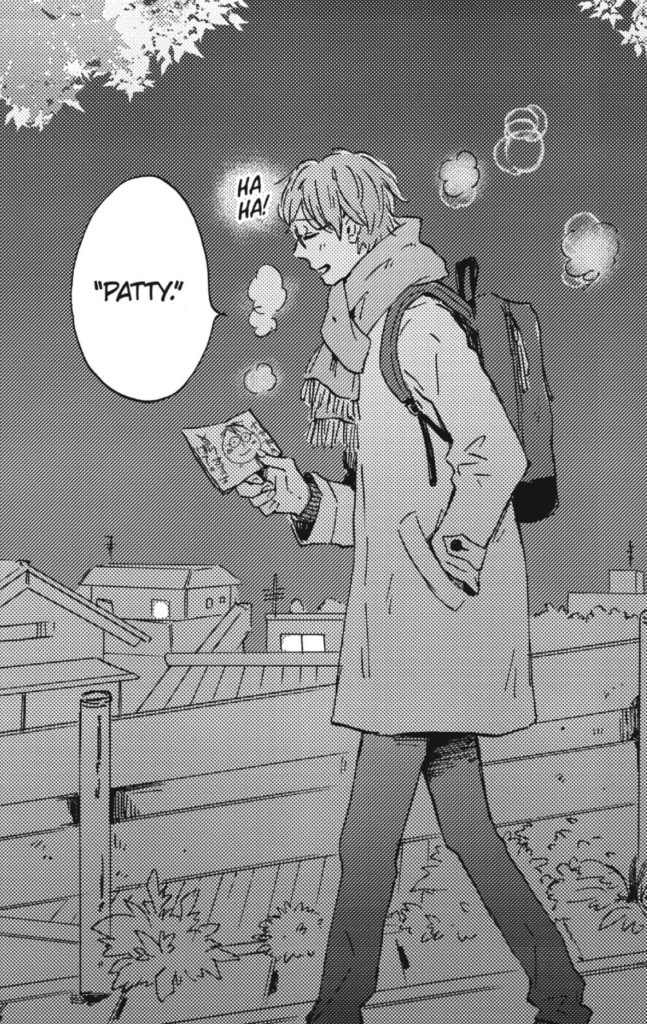
31:50 Did Our Dining Table start out as a doujinshi of Ichigo and Aizen from Bleach, with the serial numbers eventually filed off? No way to know for sure, maybe if we scroll back through the author’s Instagram? Lol. At any rate, here’s some comparison images, maybe you can make up your own mind:
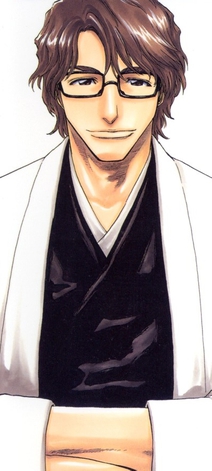

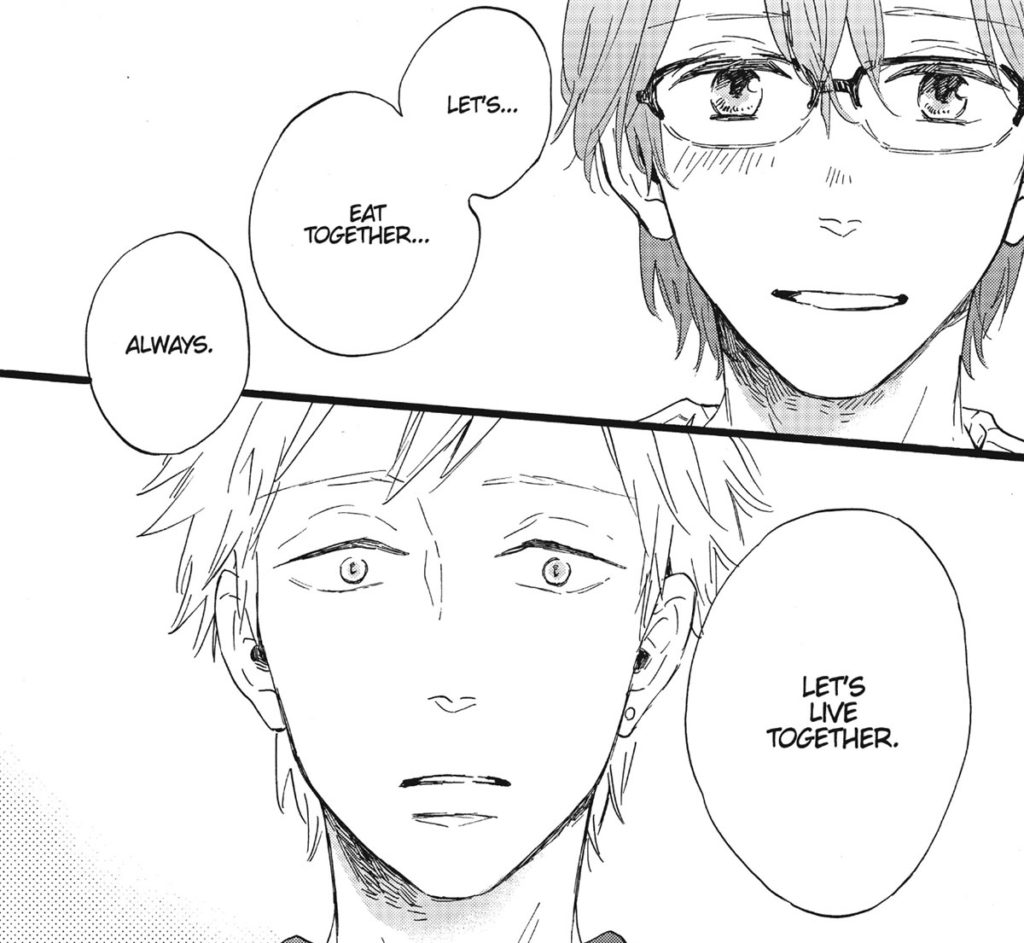
32:42 So the Naruto x Sasuke thing that David mentioned, the good folks at Otaku Mode wrote it up. Japanese voice actresses Junko Takeuchi (Naruto) and Sugiyama Noriaki (Sasuke) do a drama CD set in a cafe, and two characters that look suspiciously similar fall in love.
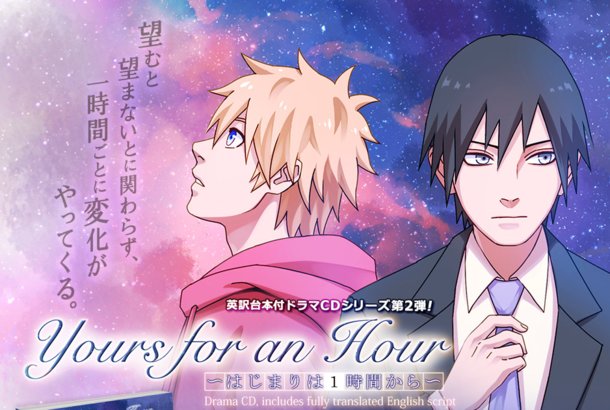
34:40 We reference a tonnnn of manga real quick right here, and later in the podcast. We’ll put a ‘bibliography’ of titles at the end of this section, for your BL searching needs.
35:50 So, I probably need to defend that statement: “The BL and yaoi manga publishing industry came to North America through porn.” If you just look above board, it didn’t. The early almost-BL titles like Yoshinaga’s Antique Bakery, or even Fake by Satami Matoh, published by Tokyopop, they were relatively ‘sweet’ largely sexless BL manga… but the market (and the acquisition of those titles) was almost entirely driven by the massive, massive piracy of BL manga that was happening, due to the belief that the material would never be licensed in English. Companies dipped their toes in with manga that would work for readers age 13+, then 16+ then 18+ titles, seeing what they could get away with in a conservative publishing industry where porn/smut, LGBTQ+ material, and frankly foreign material in general, would often get a harsh response. The people (mostly ladies) reading books through the scanlation subculture drove the licensing of those books, and while the books themselves started much lighter, they got heavy pretty quickly. It’s a complicated situation!
41:10 Laid Back Camp, by the creator Afro, also has an anime adaptation that’s similarly about almost nothing. Titles like this, Polar Bear Cafe, or Mustache-Man (Ojisan) and Marshmallow which I’ve mentioned here in the past, just have a gentleness to them that’s really resonating with people these days. Laid Back Camp manga is available now from Yen Press.
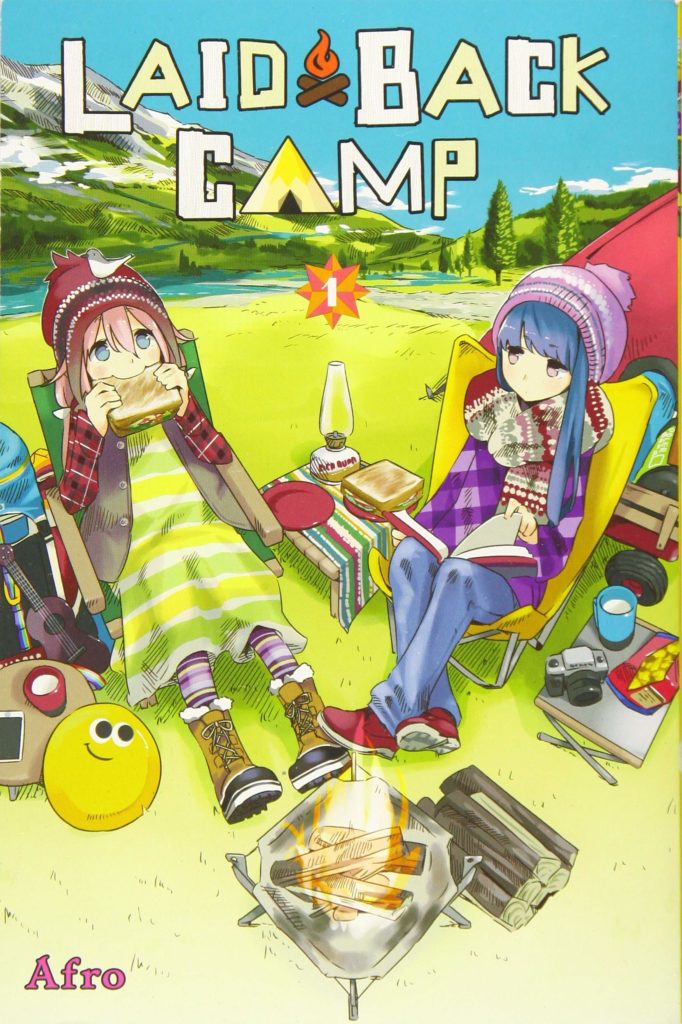
48:20 An example of one of those gay male BL artists is Minamoto Kazuki. His titles span ‘women’s manga, which is just sexy male/female pairings, BL manga, and even a more-recent ‘mainstream’ autobiographically-inflected manga about what it felt like to grow up gay. He’s an interesting dude, I’m kind of surprised no one has licensed his stuff yet!
[Deb:] As reader A Sea of Reads mentioned below, there are, in fact, some manga by Minamoto Kazuki available to read in English! Go to Futekiya Library, an online subscription-based all-you-can-read boys love manga service to read:
The Salary Man Who Has Fetish for Suit Gets Horny (Fetish Ri-man no Yokujou) and The Midnight Association for the Broken Hearted (Gozen Reiji no Shitsuren Doukoukai) and see for yourself!
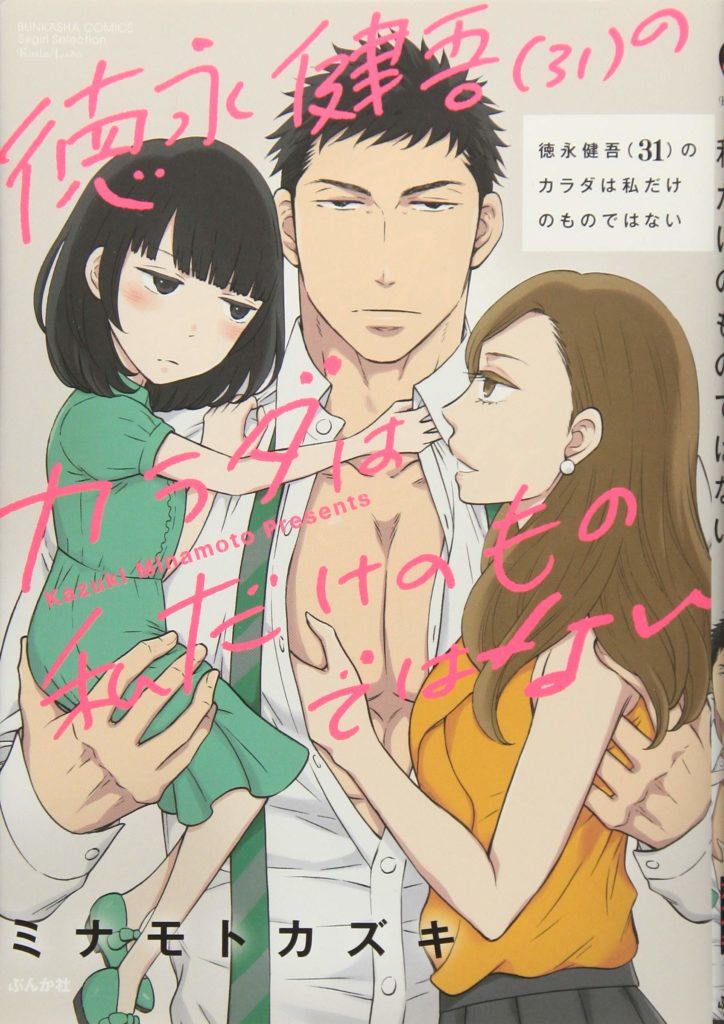
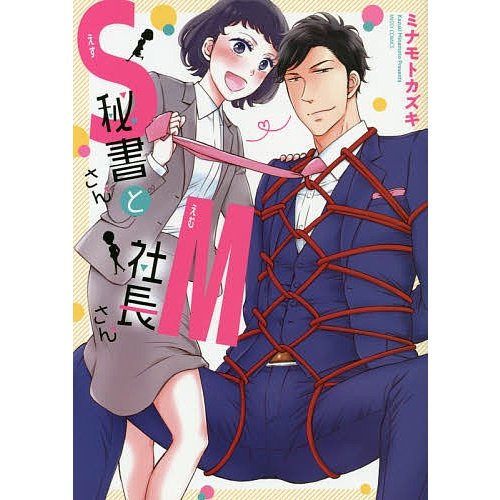
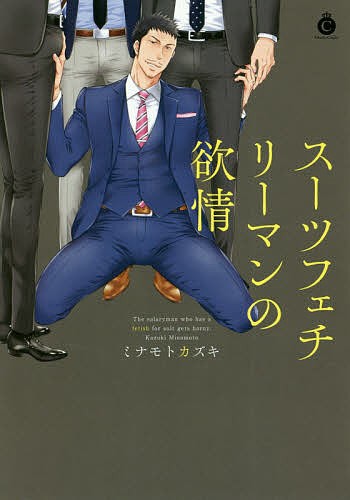
50:30 The TV Tropes website has a lot to answer for.
55:00 The epilogue features a flash-forward, with a grown-up Tane-kun, and a suit-wearing, day-job having Minoru… Who does feature more than a passing resemblance to John Constantine, it must be said.
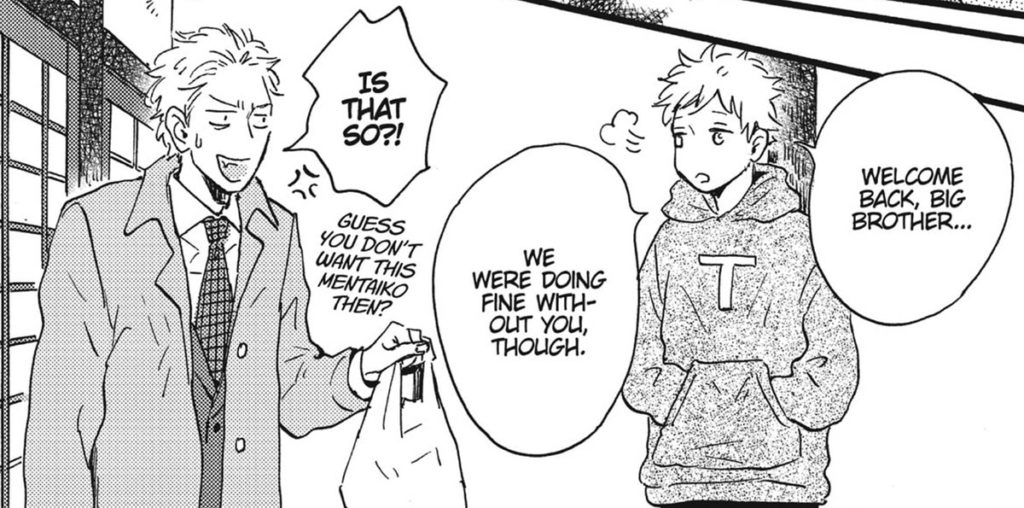
56:00 [Deb:] Cooking rice in a donabe, or ceramic covered pot is a thing! If you find the instructions in Our Dining Table to not be as instructive as you’d like, check out Just One Cookbook for more step-by-step instructions, so you too can figure out if this will have you sending your electric rice cooker to the thrift store. 😉 https://www.justonecookbook.com/how-to-cook-rice-in-donabe/
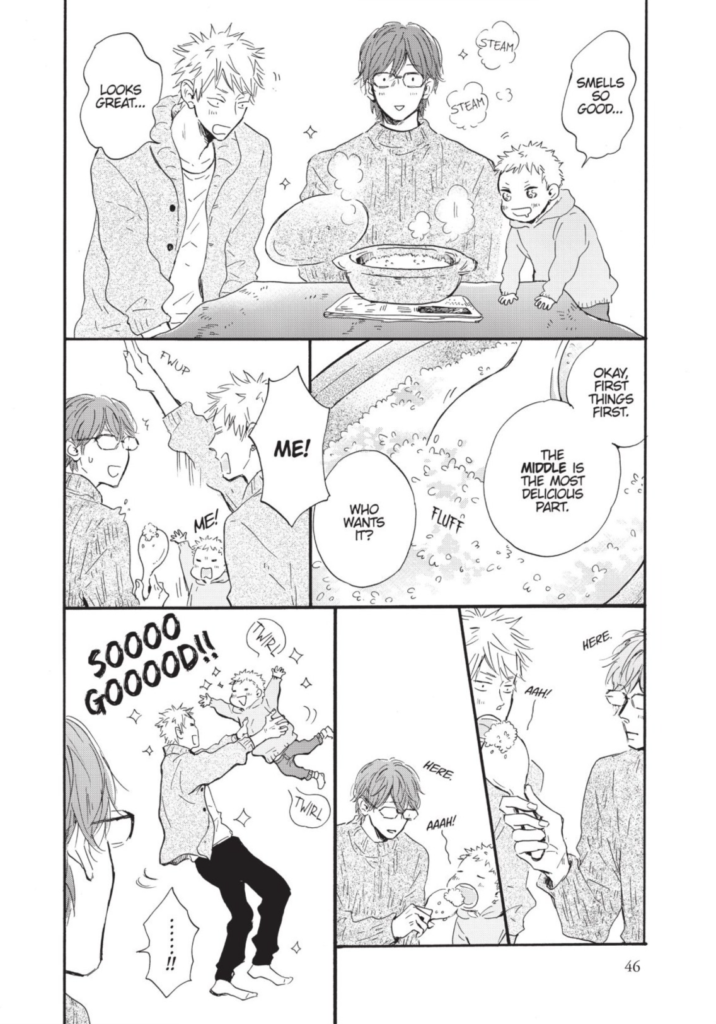
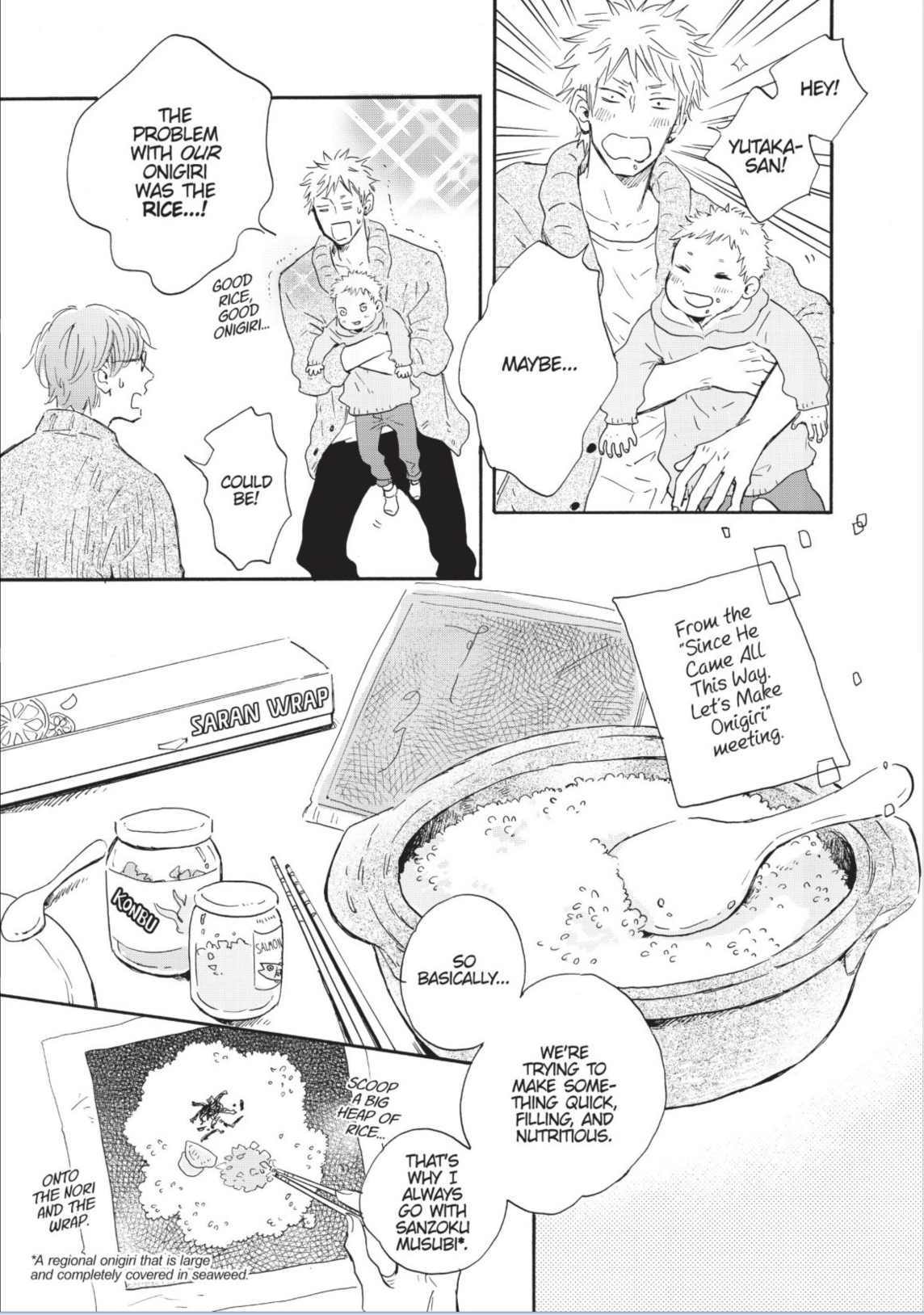
BL MANGA MENTIONED IN THIS EPISODE
Classic BL / “shonen-ai” manga:
The Heart of Thomas, by Moto Hagio – Unrequited and doomed love at a boys boarding school in Germany. (Fantagraphics)
Song of Wind and Trees, by Keiko Takemiya – Two boys fall in love at a boarding school in France in 1880, despite their different backgrounds and conflicting motivations. Will they destroy each other? (Not available in English. )
Antique Bakery, by Fumi Yoshinaga – An effortlessly irresistible and sexually active gay pastry chef moves to a new bakery, where he finally meets a man he can’t seduce… Or can he? (Published by June Manga/DMP – Out of print)
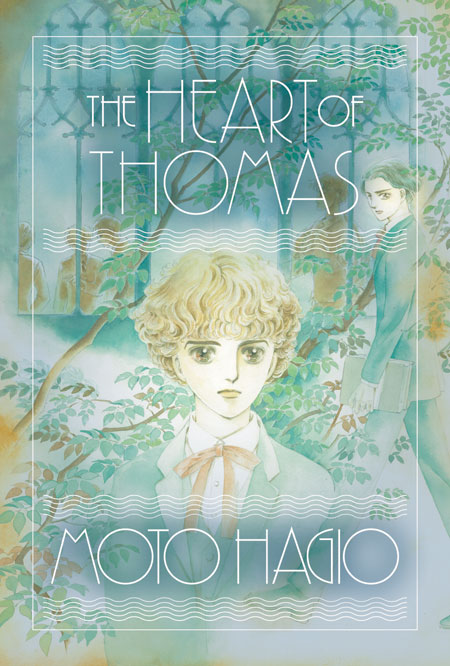
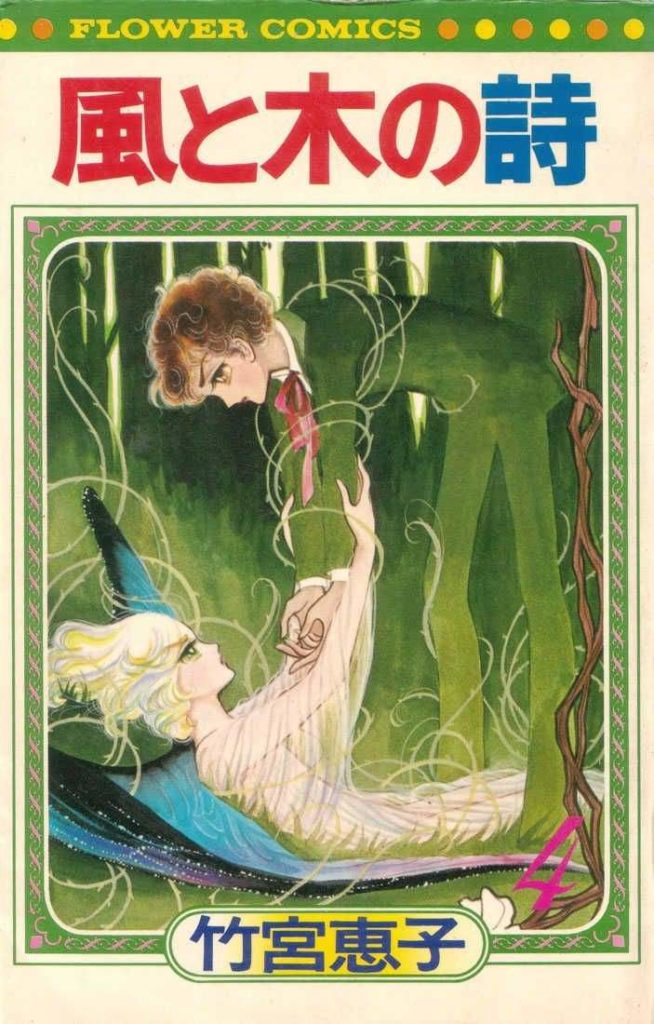
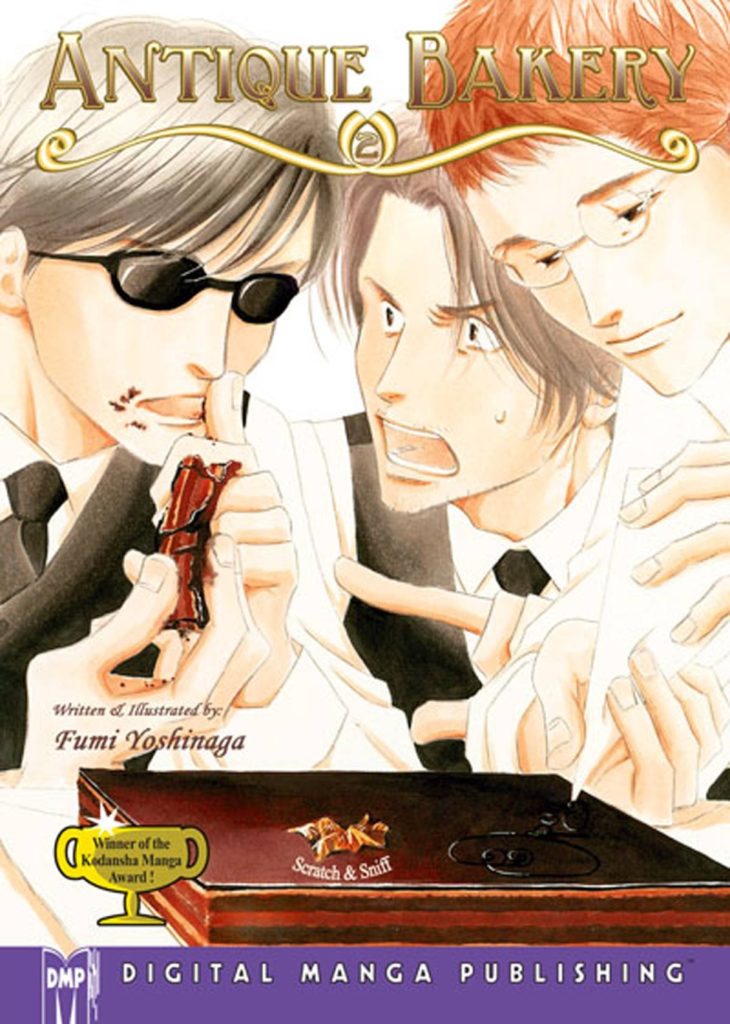
Contemporary “gentle” BL manga:
Restart After Coming Back Home, by cocomi – After getting fired from his job in Tokyo, a young man returns to his home town in the countryside… where he meets the man of his dreams. (Seven Seas). [Deb:] The sequel volume, Restart After Growing Hungry is out now too.
My Love Mix-Up!, by Wataru Hinekure and Aruko – A boy likes a girl, who thinks that girl likes another boy, who thinks that boy likes him! (VIZ Media)
I Cannot Reach You, by Mika – Childhood friends, both in love with one another, just can’t seem to get together due to some seemingly simple miscommunications and missed opportunities to get on the same page, relationship-wise. (Yen Press)
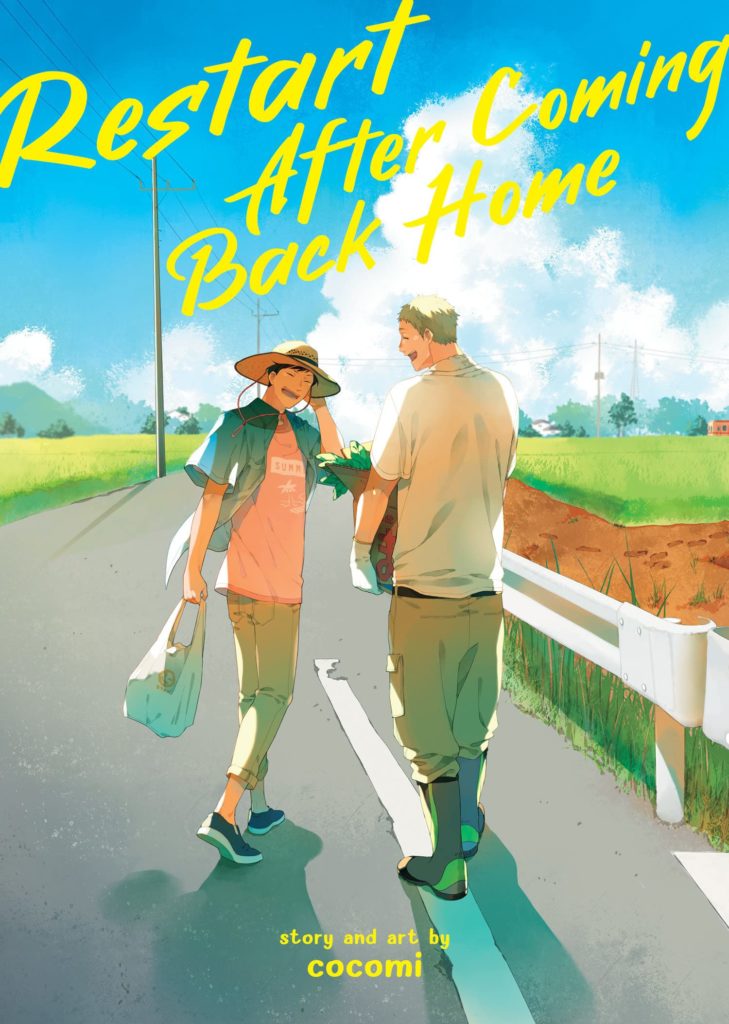
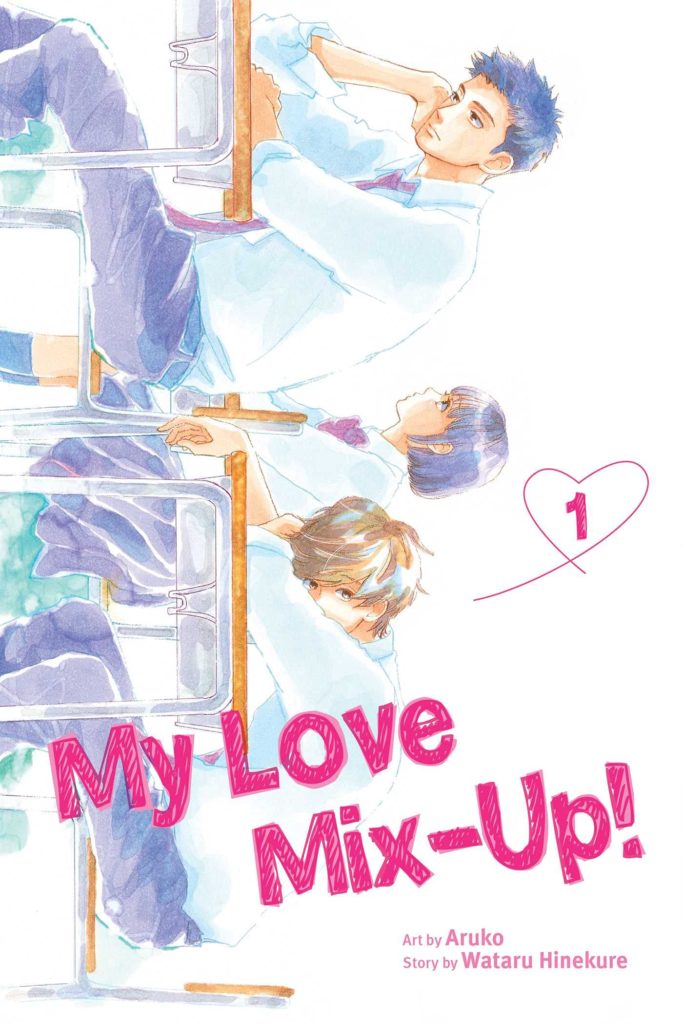
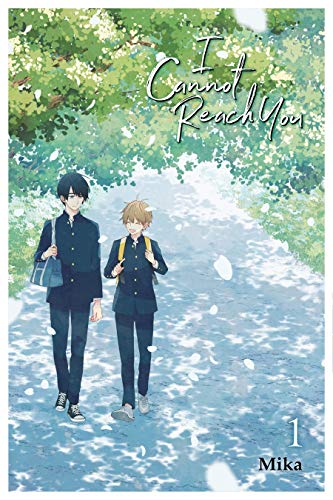
Slightly Smutty Contemporary BL Manga:
Cherry Magic: Thirty Years of Virginity Can Make You a Wizard?! by Yuu Toyota – Having the pent-up energy that comes from being a 30-year old virgin gives office-worker Adachi magical powers, to read people’s minds — all he has to do is touch the other person! After his powers awaken, he finds out the seemingly cool (yet hot) guy in the office has a crush on him, and has been having some fantasies about what he’d do with Adachi, if only… (Square Enix)
[Deb:] There’s a live-action TV series adaptation of this that’s now airing on Crunchyroll: https://www.crunchyroll.com/cherry-magic-thirty-years-of-virginity-can-make-you-a-wizard
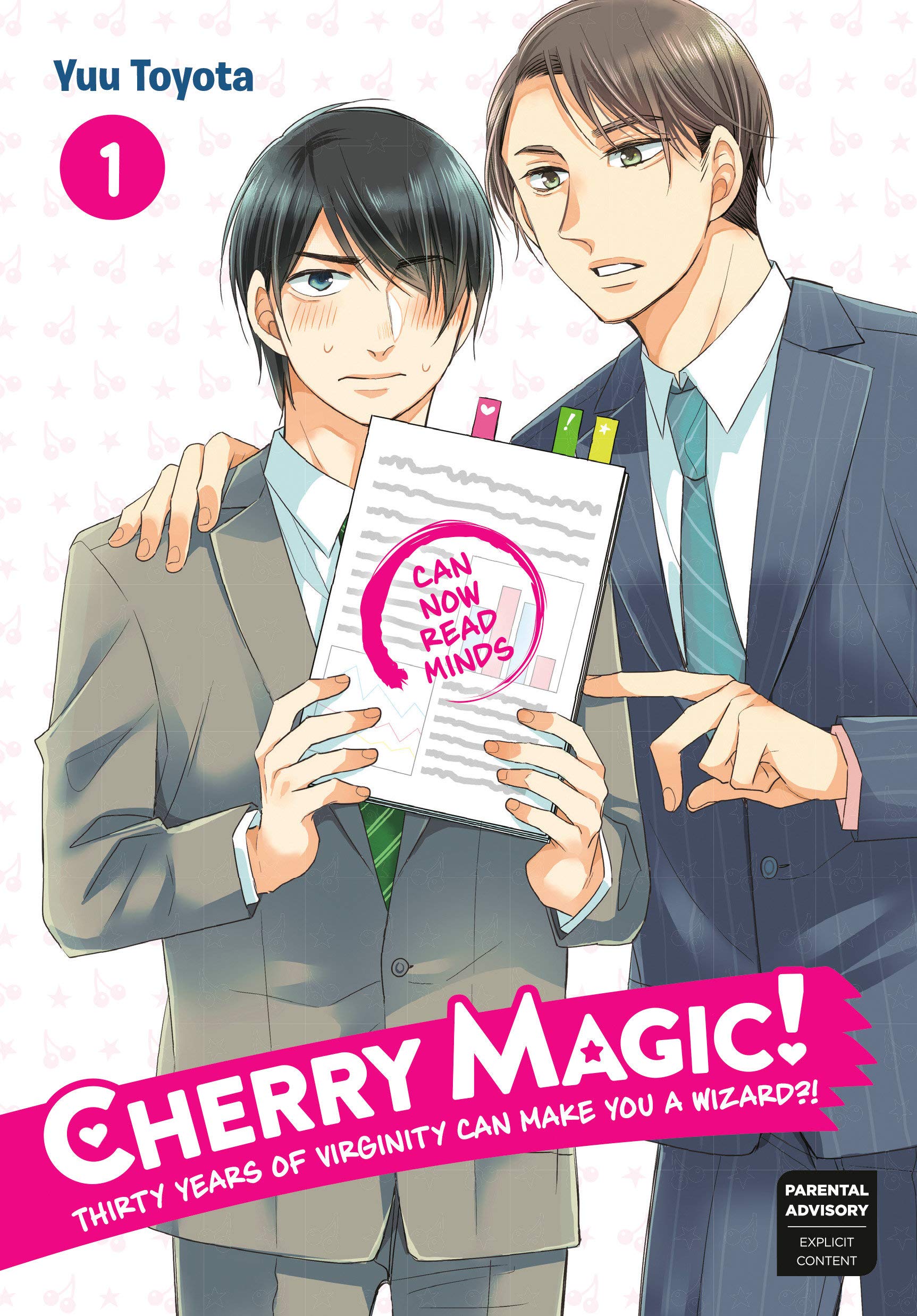
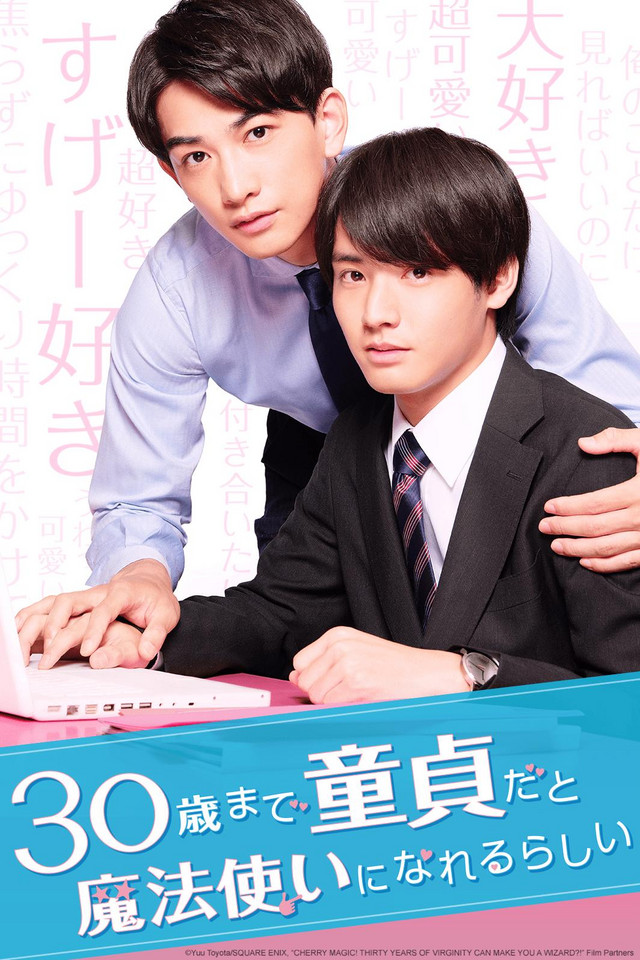
Smutty Contemporary BL Manga:
Bad Boys, Happy Home, by Shoowa and Hiromasa Okujima – A high-school delinquent (He’s 18! Calm down people!) can’t deal with his feelings, so he picks fights with a hot homeless dude that he ends up falling in love with, but maybe he can’t deal with that either? (SuBLime Manga)
World’s Greatest First Love, by Shungiku Nakamura – A dude tries to get a fresh start by taking on a new job, except the job has him working ‘under’ his high school ex! (SuBLime Manga)
Painter of the Night, by Byeonduck – Set in the Joseon era, the painter in Painter of the Night is a young artist who keeps his collection of paintings of beautiful men pleasuring each other a secret from everyone. But when an aggressive and promiscuous nobleman gets turned on to his art, and forces the artist (who is gay, but hasn’t had a lot of sex… yet) to pick up his brush once again, the painter ends up serving his new patron by creating art and trying to satisfy his master’s seemingly insatiable taste for erotic adventures in other ways. [Deb:] Warning: This one is hella smutty and has hella INTENSE plot twists. (Lehzin Comics).
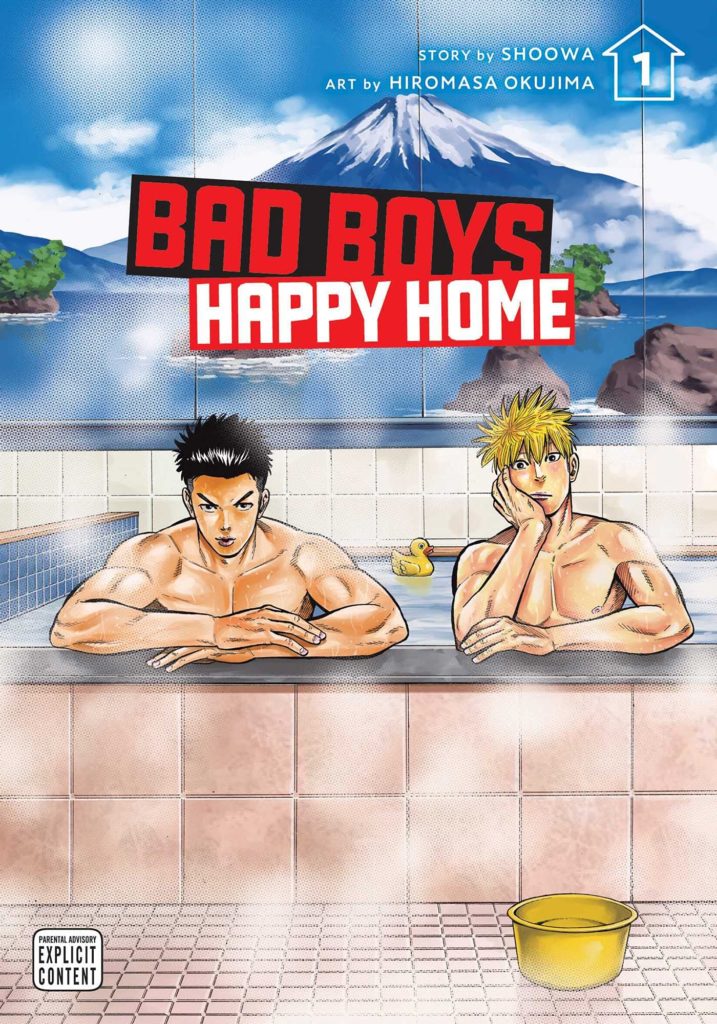
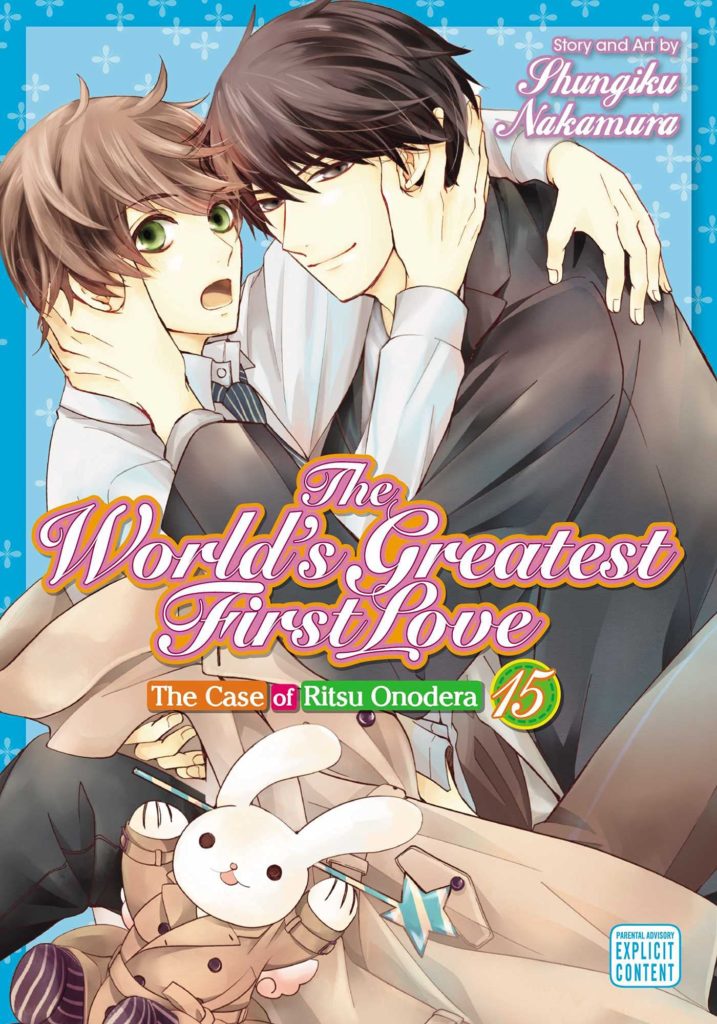
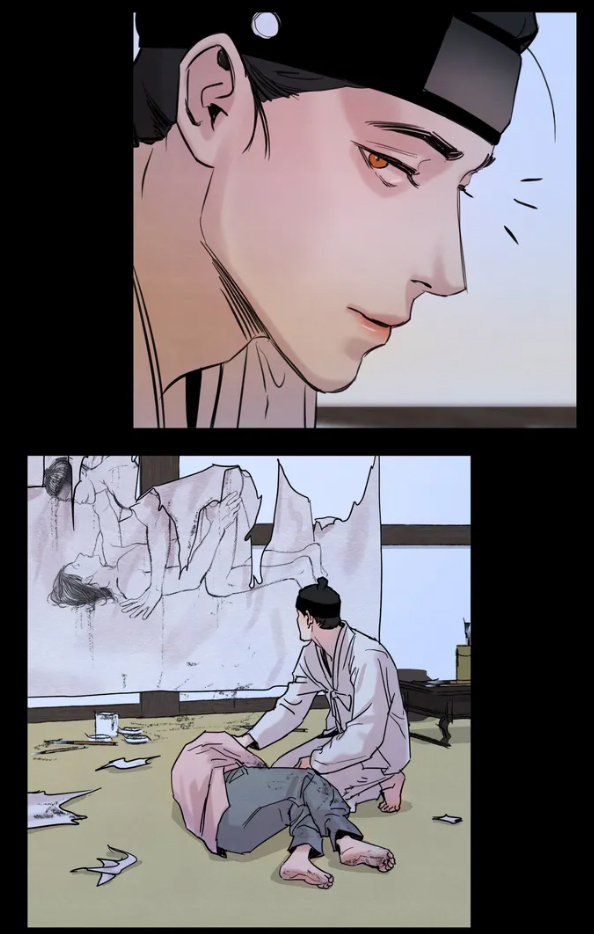
57:15 THE BREAK! After this point time stamps aren’t going to be to-the-second accurate, mostly because of dynamic ad insertion.
This segment is sponsored by VIZ Media, as part of our VIZ Manga Blind Date series.
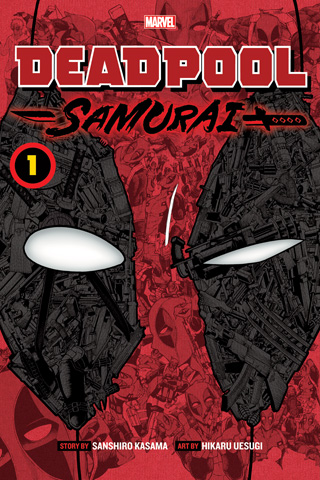
Deadpool: Samurai Volume 1
Written by Sanshiro Kasama, art by Hikaru Uesugi
Translated by Amanda Haley
Lettering & Touch-Up by Walden Wong
Edited by David Brothers(!)
Published by VIZ Media (Digital / Print)
Read a free preview: https://bit.ly/DeadpoolPodcast
Here’s how the title is described by the publisher:
Anyway, Deadpool lands in Tokyo with a bang! What could possibly go wrong when Iron Man invites Deadpool to join the Avengers’ new Samurai Squad? After all, Deadpool is just in it for the money…and the trip to Japan. This is fine, right?
VIZ Media
1:00:00 This is really, surprisingly violent. Matches the films in that way!
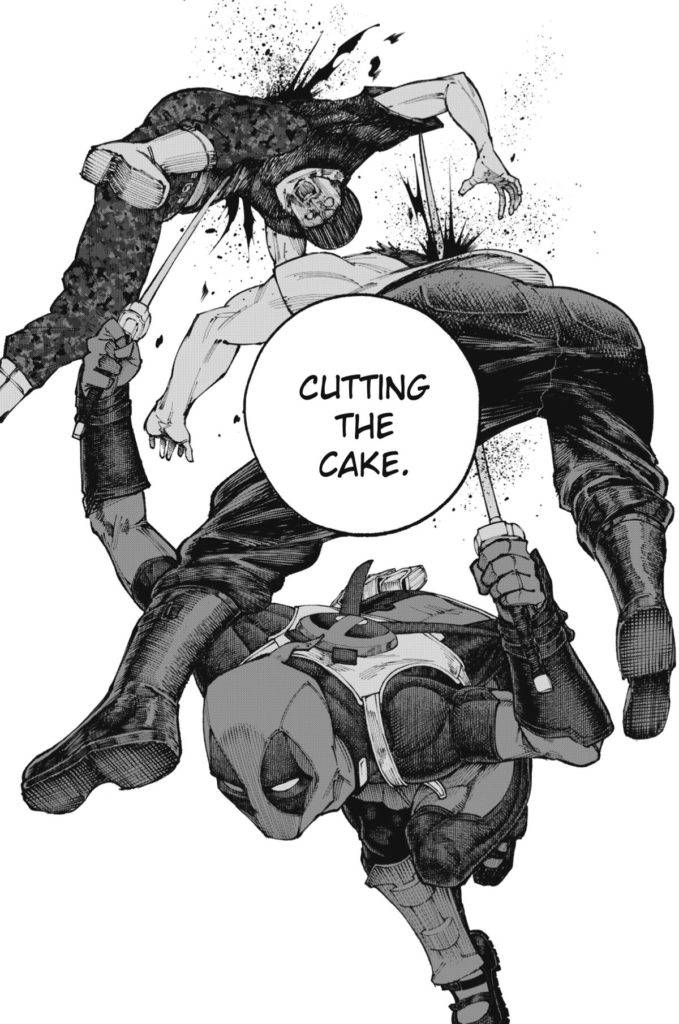
1:01:00 The “send the bill to Kodansha” joke is great. The joke being that this comic is published by Shueisha in Japan, of course.
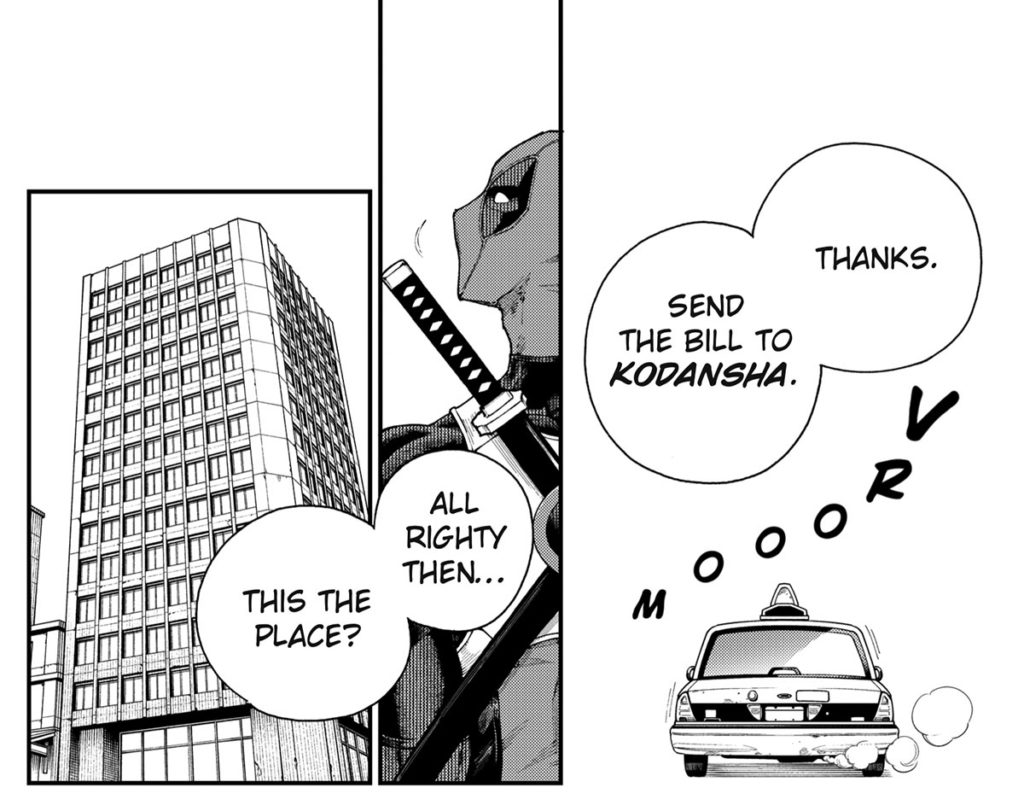
1:02:14 The symbiote is drawn really well! Even Deadpool comments on it:
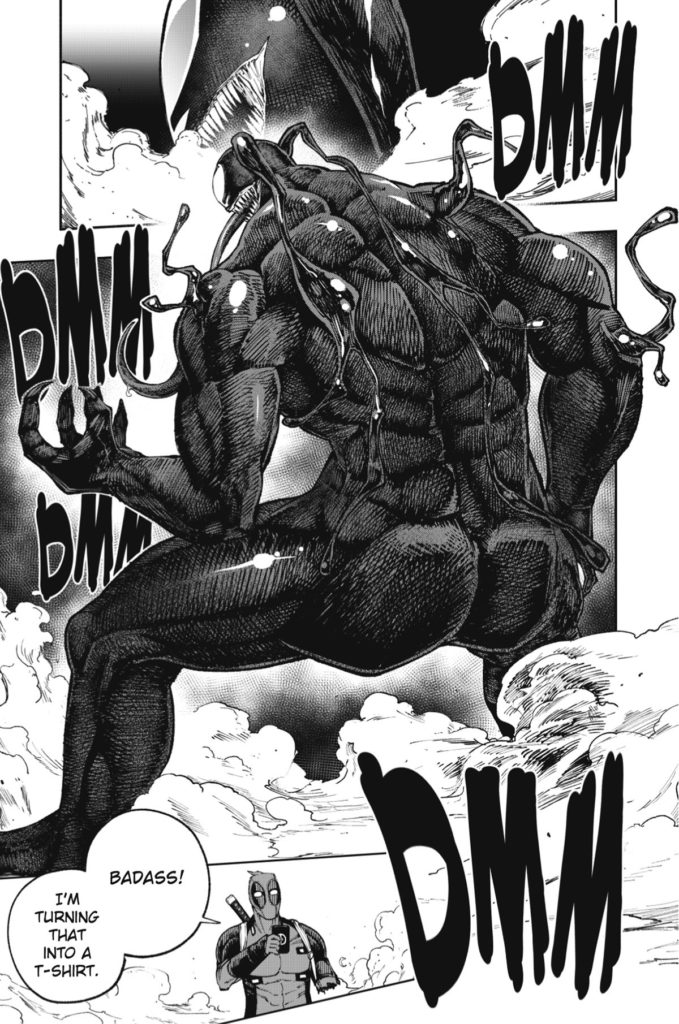
1:03:30 Think I touched a nerve with Chip there. Lol. FWIW, I read about Deadpool’s first appearance in The New Mutants issue 98, all the way through the Kelly/McGuiness series (including the minis). I also watched both Deadpool movies, they’re pretty good, IMO. I still can’t quite reconcile the versions of all of the characters in this, and it took me out of the story a little, but the gags in around the manga stuff are excellent. Diff’rent Strokes.
1:05:00 Mean comments about the artist! The writer points out that the artist suffers from same-face syndrome. [Deb:] The critique is trrrruuuuue, but imagine being the artist who has to draw that script?
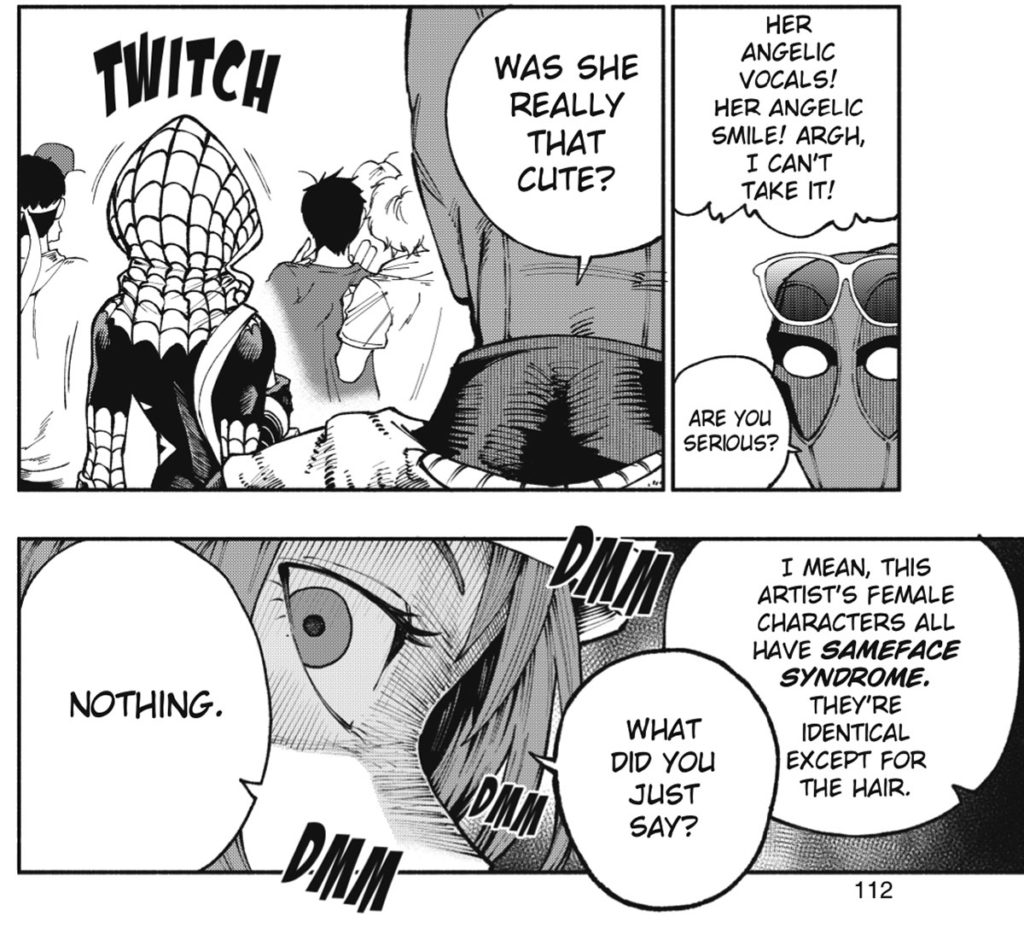
1:05:25 Deadpool loves DevilMan! Man, glad we read DevilMan before we got to this… Lol.
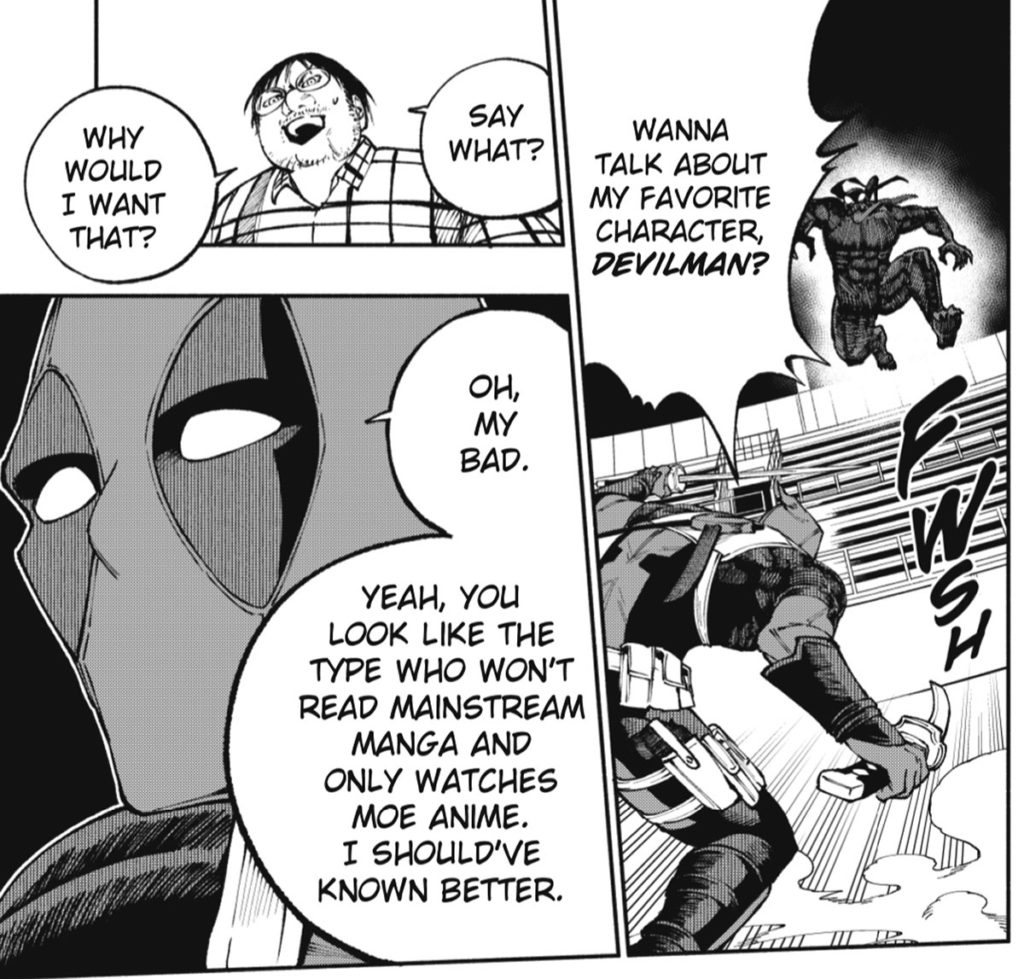
1:05:35 Deb calls out a few more Shonen Jump references, including Fire Punch (by the creator of Chainsaw Man) and Demon Slayer!
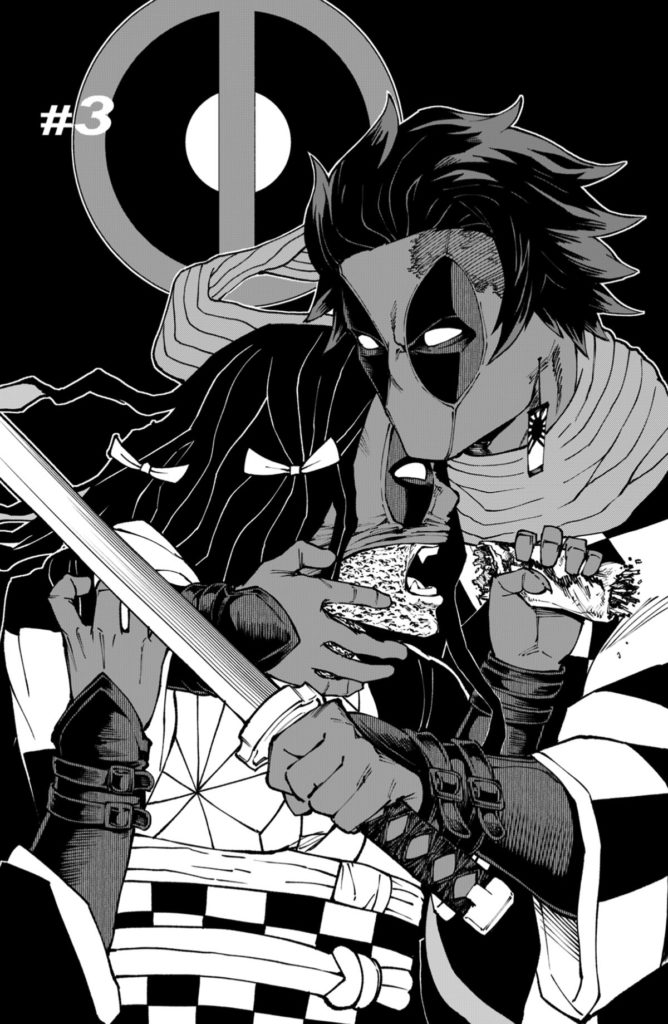
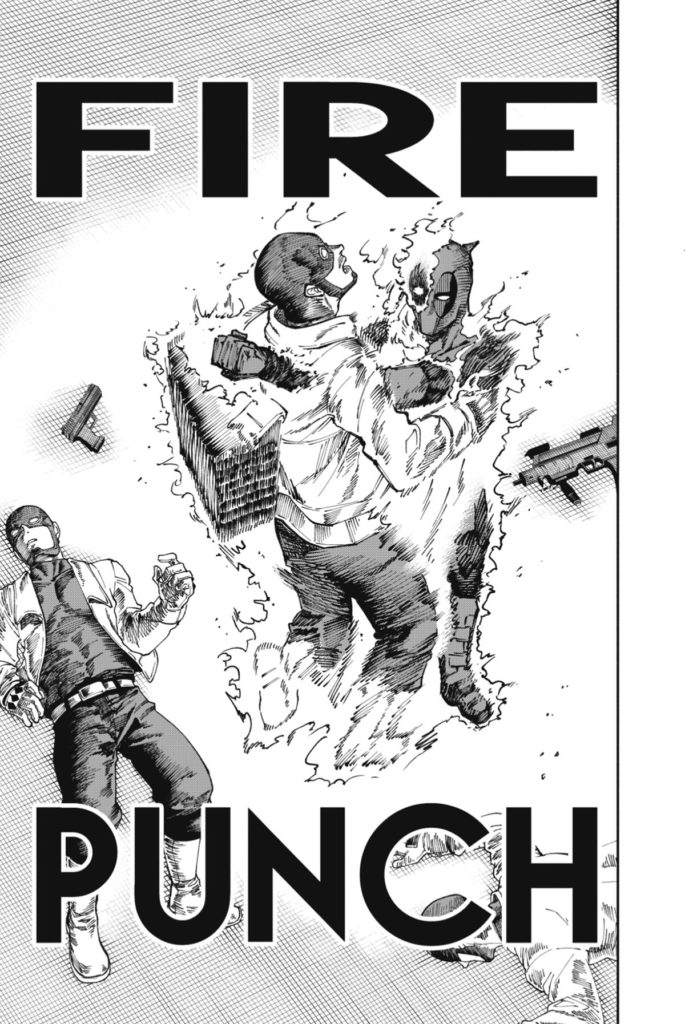
1:06:50 Chip really liked this reveal of the pop idol as a symbiote, swallowing a human hand, tongue wrapped-around it. It’s pretty badass. 😉
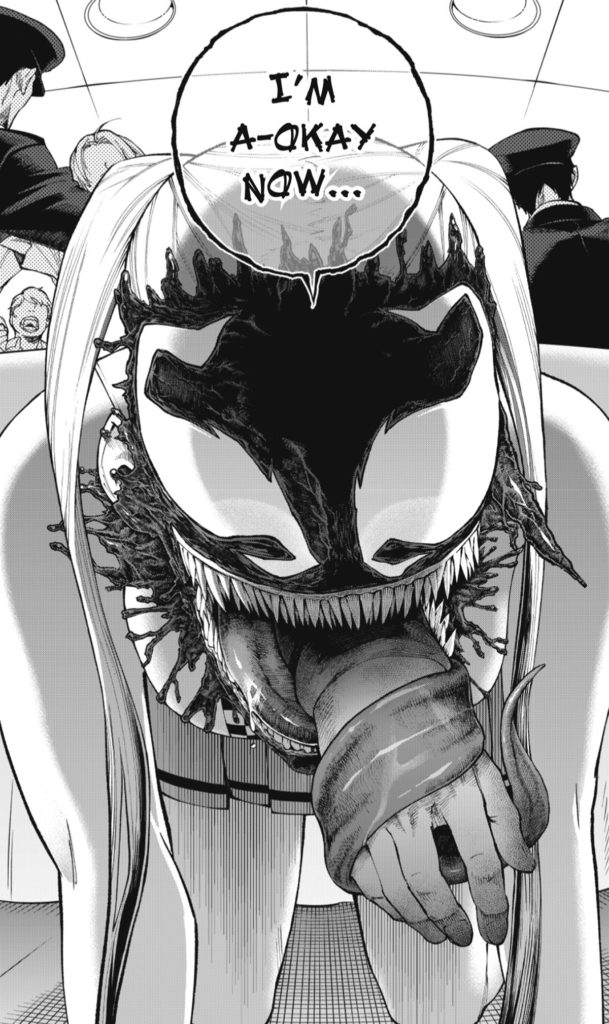
[Deb:] One thing we didn’t get into during our discussion of Deadpool Samurai is that it’s the latest in the long, long history of American comics adapted for Japanese manga readers. There’s the manga version of Spider-man by Ryoichi Ikegami (artist of Crying Freeman) and Bat-Manga by Jiro Kuwata (available now from DC Comics) to name just a few.
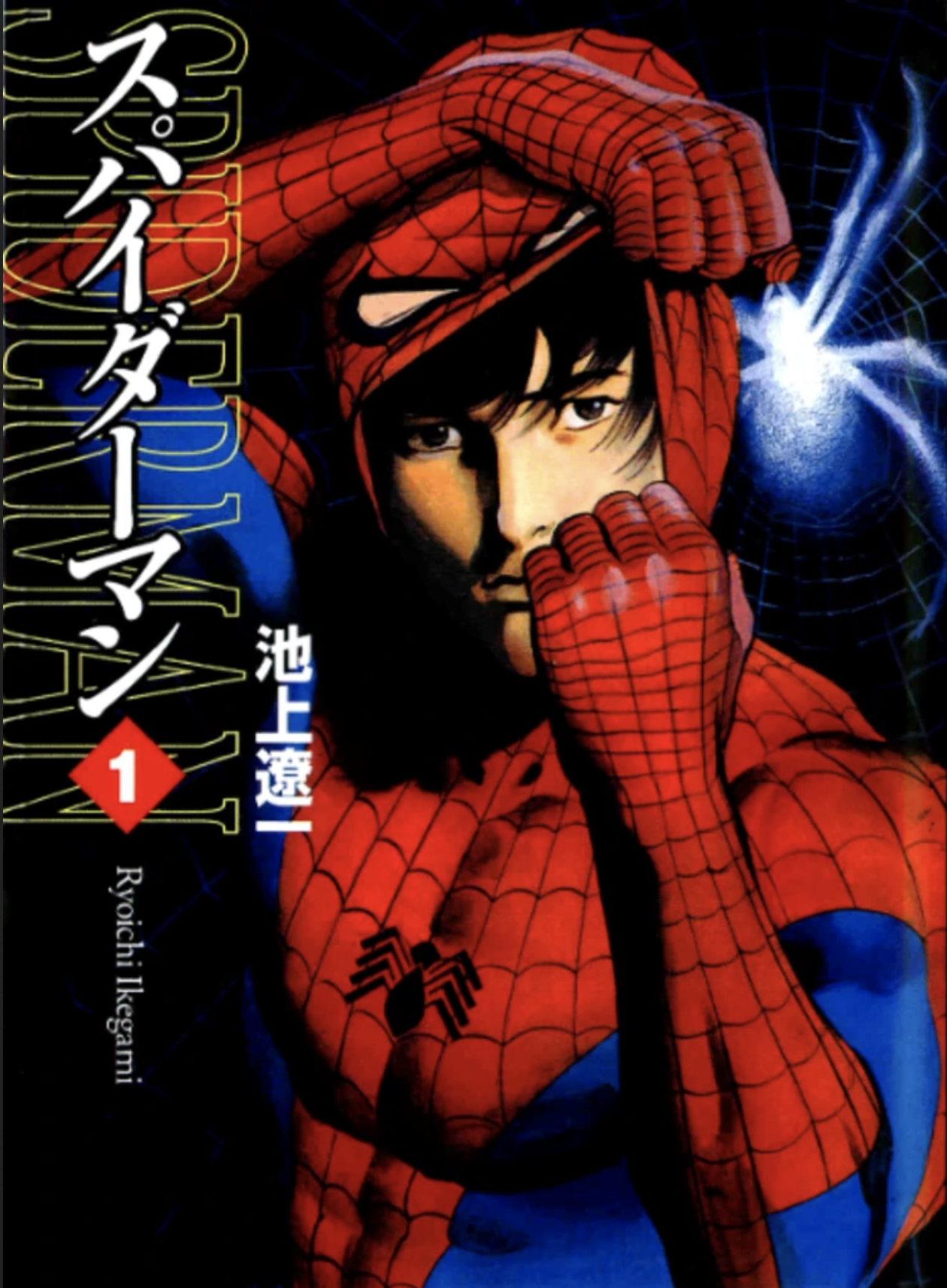
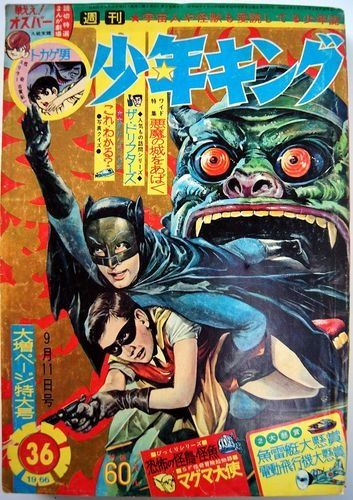
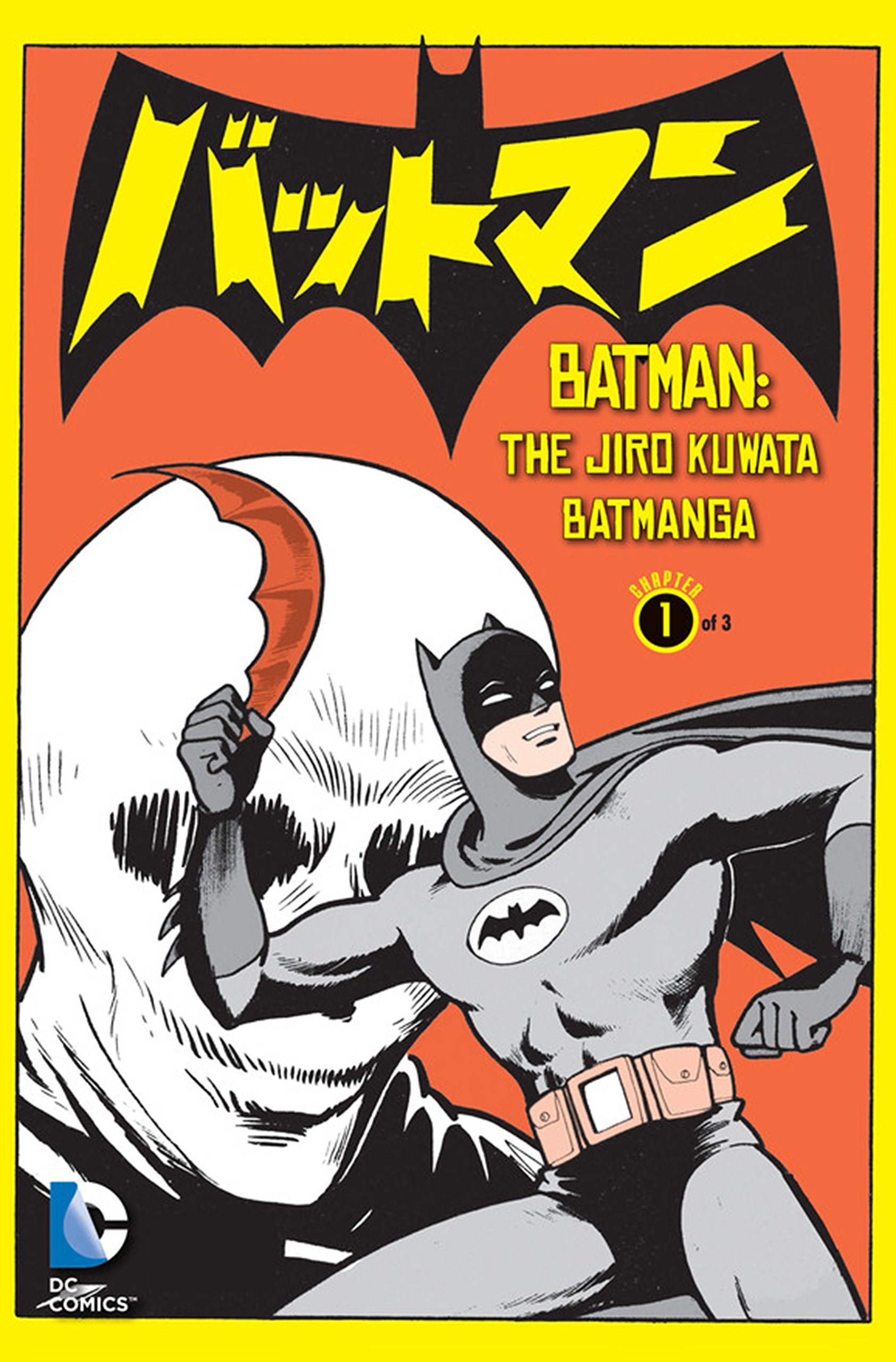
1:09:15 It’s time for THE SECOND BREAK! After this break, the timestamps will be even further off due to dynamic ad insertion.
1:10:00 It’s time for our Question of the Week! This week we have a question that came in via email:
My question stems from recently devouring DanDaDan after hearing Deb’s description and recommendation of it for the show, but it pertains to any fairly new title: about how long does it take for a new title to be released in English (assuming it is deemed popular enough)? Do the publishers tend to ‘bank’ a certain number of chapters before producing a physical release so that they can keep to some sort of standard release schedule?
Tim Burnham, via Email
David’s answer: It varies! He gives an incredibly good and thorough answer, which is great!
The day before this episode went live, VIZ finally announced that they will be publishing DanDaDan Volume 1, by Yukinobu Tatsu, in print in Fall 2022, a little over a year after volume 1 was released in Japan. That’s about the quickest I’ve seen in a while.
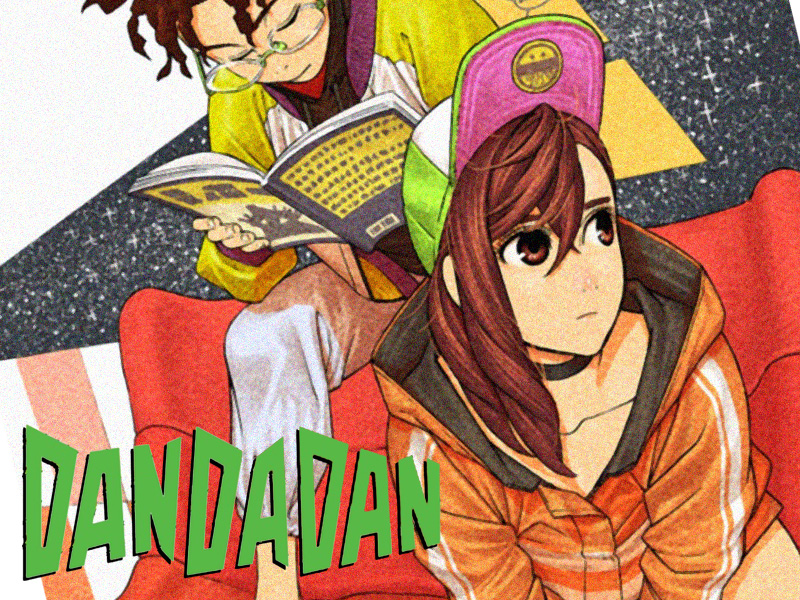
David also references the Ur-Salaryman Manga Kosaku Shima, which follows the life of a businessman as he works his way up the corporate ladder in Japan. It is, agreed, the best ‘boring’ manga ever made.
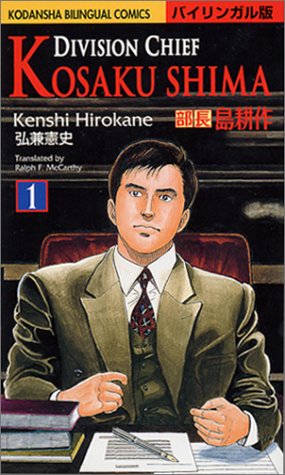
[Deb:] I just discovered the new “official” isekai spinoff of Kosaku Shima, written by the original author, but drawn by another artist. You can read (in Japanese) on Kodansha’s Comic Days website.
[Christopher:] This is wild.
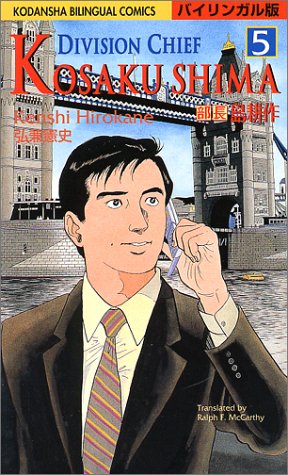
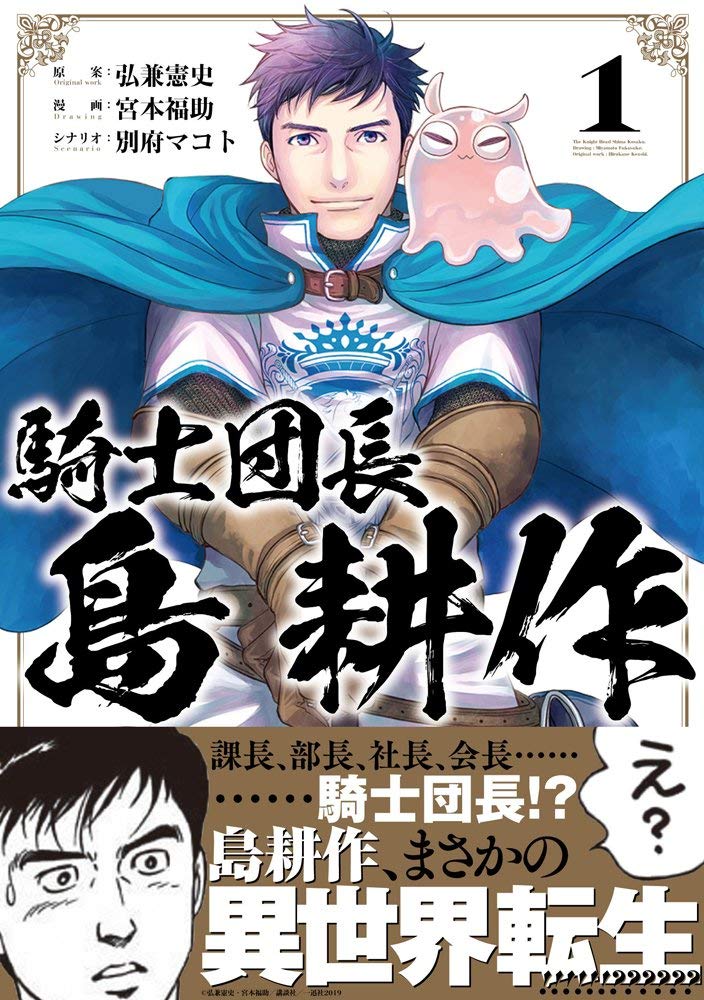
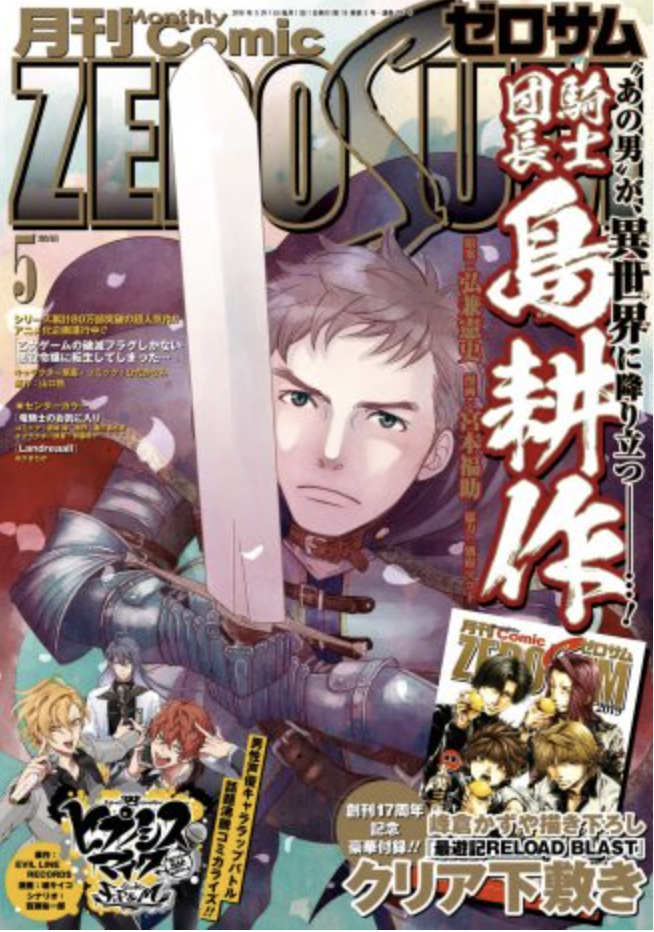
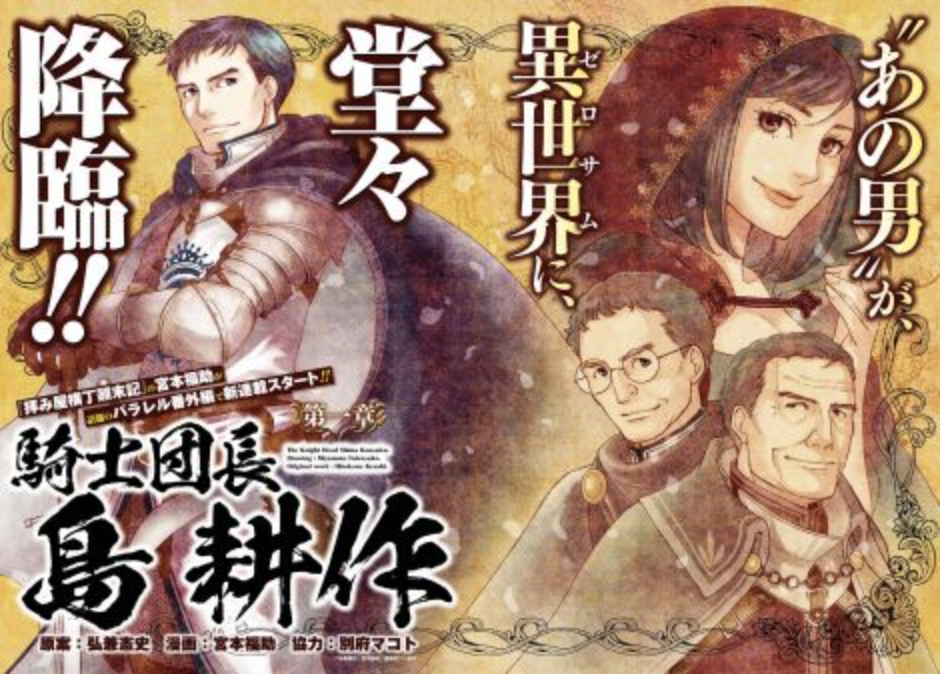
Christopher mentions another great ‘boring’ business manga that he recently paged through, Shotaro Ishinomori’s Japan, Inc., a business book about the Japanese economy, the auto sector, and The Nineteen Eighties. Here’s the cover and the page he mentions.
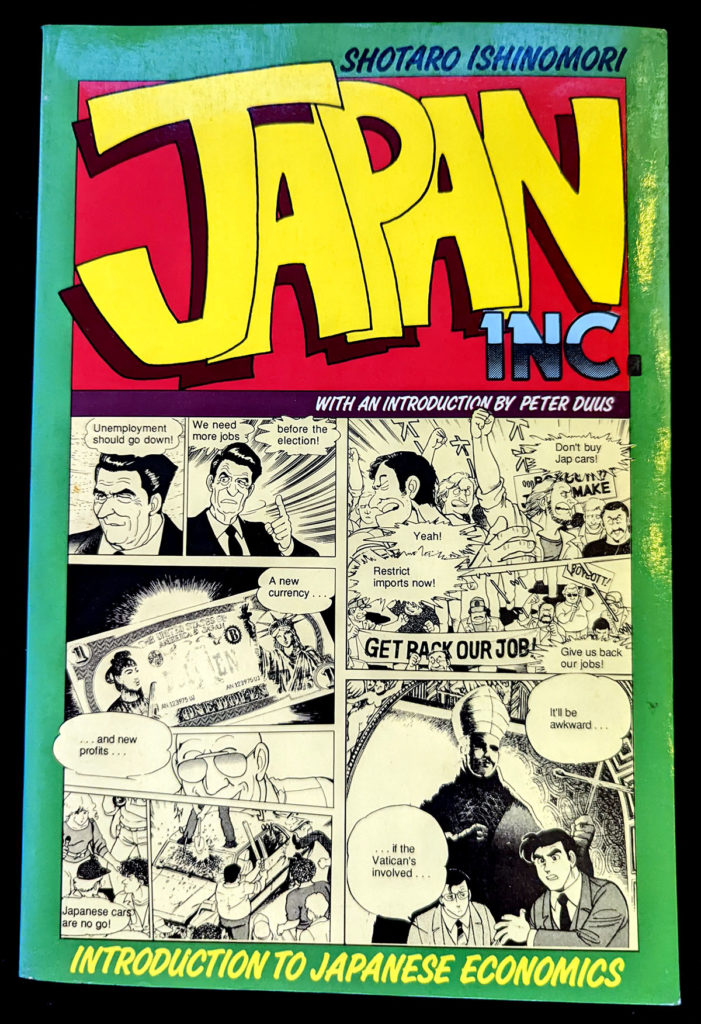
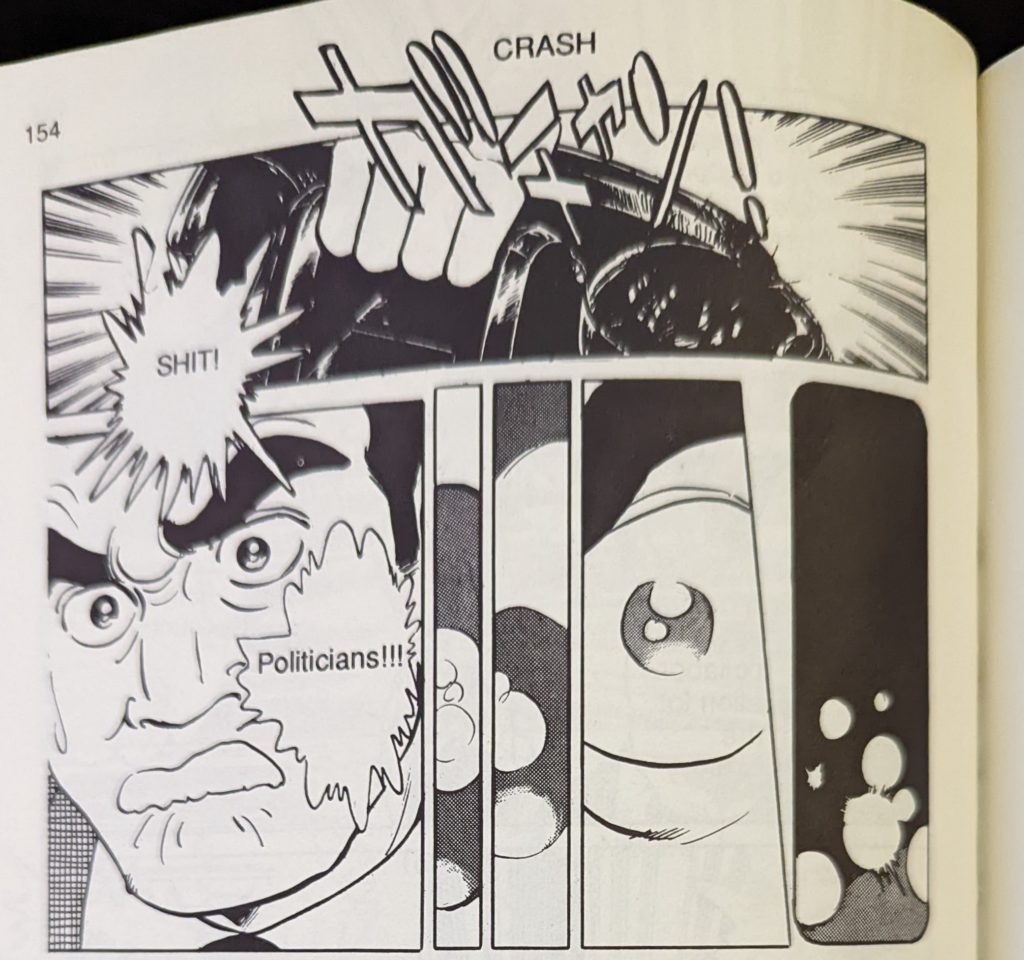
And here’s the second-to-last page of the book.
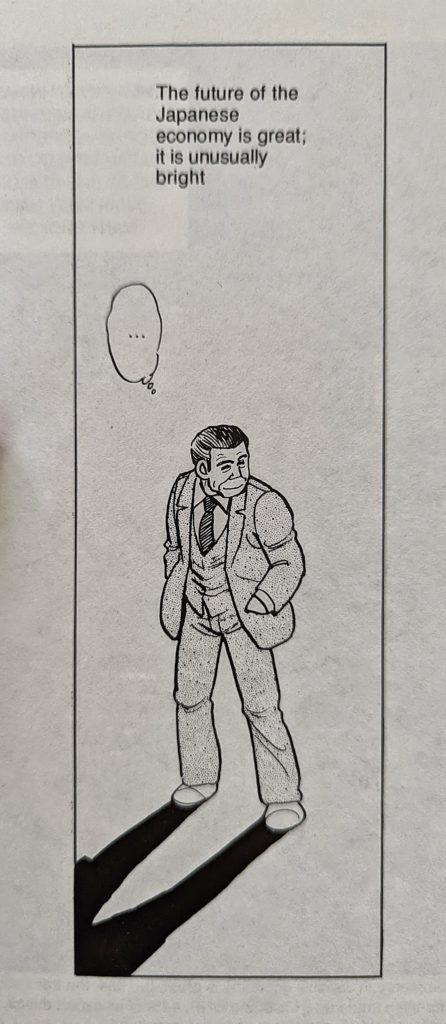
Things… actually didn’t go that well, by the mid 1990s. Like really, really badly. Japan still hasn’t exited its recession begun in 1996. This aged poorly.
I wonder if there’s a follow-up book?
Oh, and, just for the record, Kakegurui: Compulsive Gambler by Homura Kawamoto and Toru Naomura is published in Japanese by Square Enix, and in English by Yen Press. My bad for confusing the two! Yen Press.
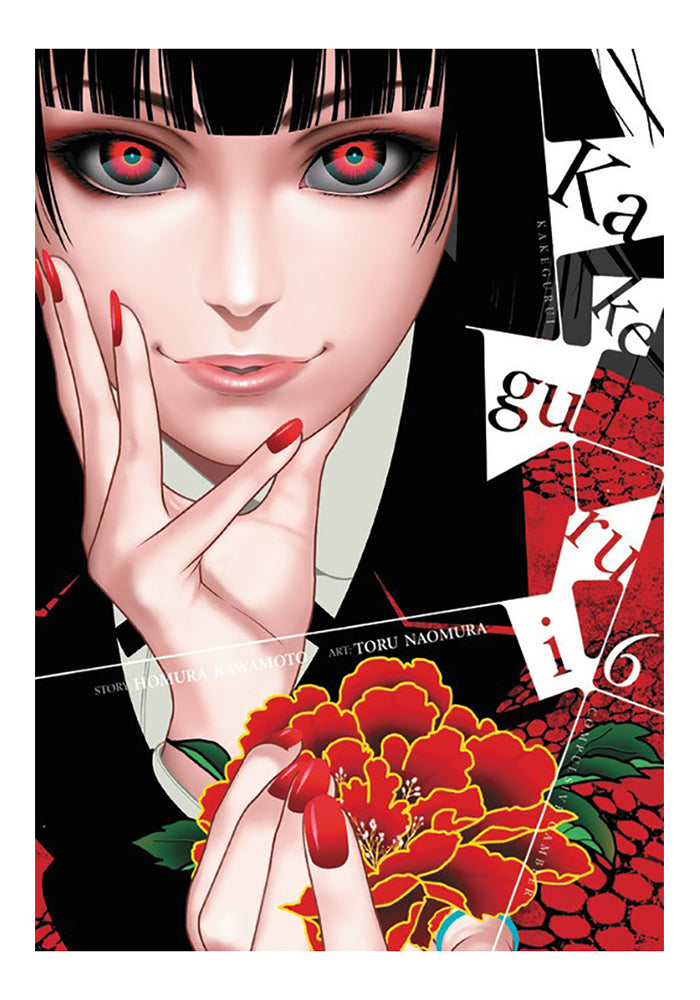
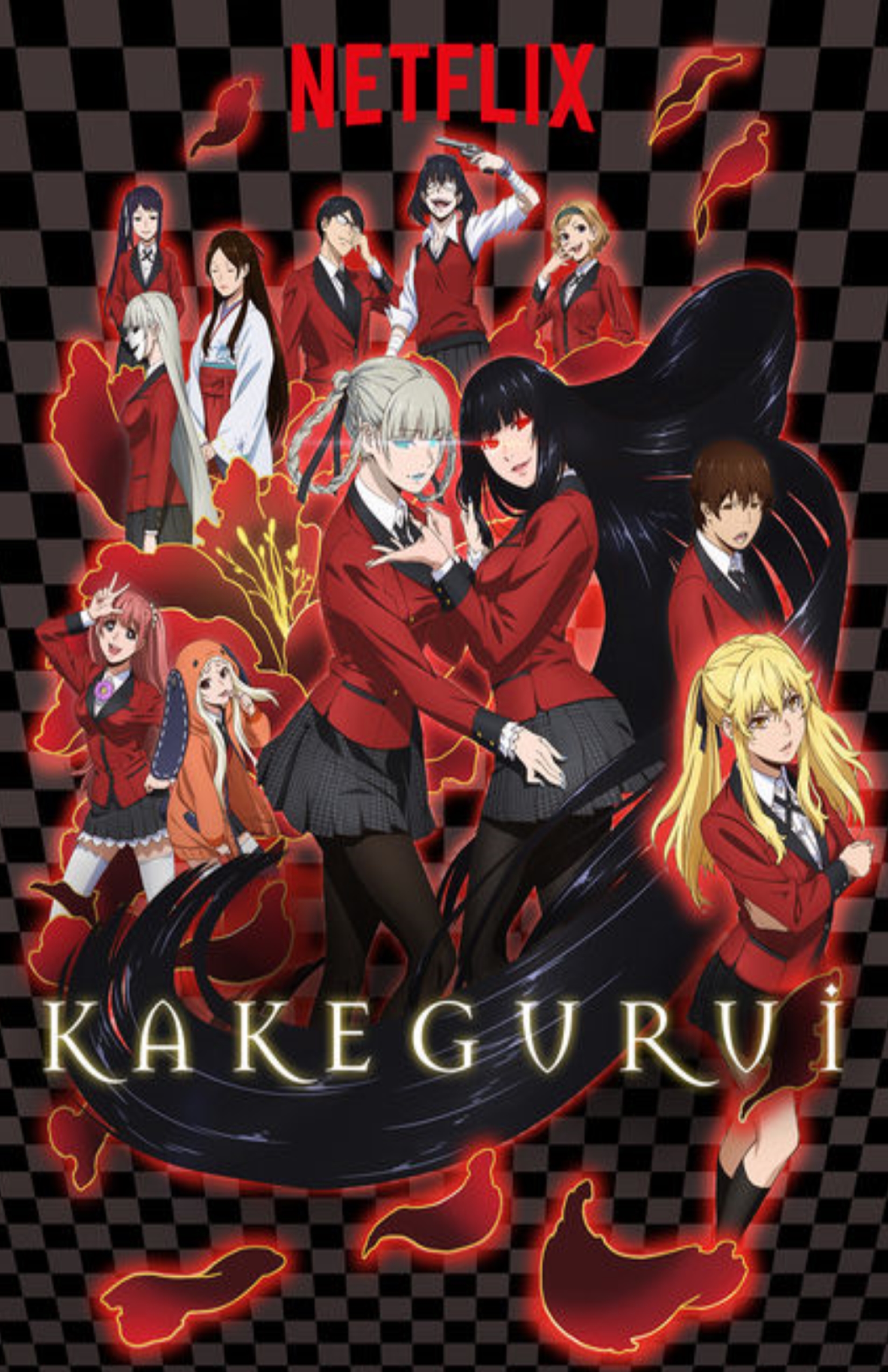
[Deb]: There’s also an anime adaptation of Kakegurui AND a live-action version too. Crazy, high-stakes gambling manga, now with cute (albeit insane) girls. Shine on, Japanese manga, you crazy diamond.
1:14:45 It’s time for SHOUT-OUTS!
Deb recommends the Korean drama Our Beloved Summer on Netflix, which is… based on a manhwa/webtoon! She says that the drama is much better. She also said My Beloved Summer, but we’d been recording for 2 hours at this point, please be kind. 🙂
[Deb:] While a documentary is being filmed at their high school, a poor but intensely studious girl gets paired up with an easy-going boy who proudly holds the last place in his class rankings, grades-wise. They hate each other at first, but eventually fall in love and have a fun, but often tumultuous relationship while in college. They break up, but five years later, circumstances bring them back together. Their reunion as adults forces them to reconsider why they broke up and whether they’re meant to be, or whether it’s better to just move on. It’s got drama, but it’s mostly a sweet, funny and comforting romance.
See a trailer here:
Read the comics version on Webtoon.
Deb also recommends the BL manga I Cannot Reach You, which we mentioned earlier.
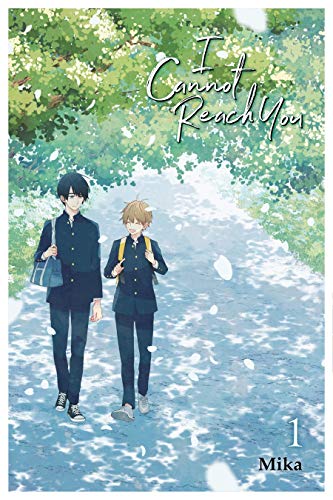
Chip Recommends the HBO drama Search Party, starring Mabee from Arrested Development, aka Alia Shawkat. Sounds good. 🙂
David goes the manga route, and recommends a two takes on a sort of post-apocalyptic Meatloaf Manga, with Girls Last Tour, by Tsukumizu and published by Yen Press:
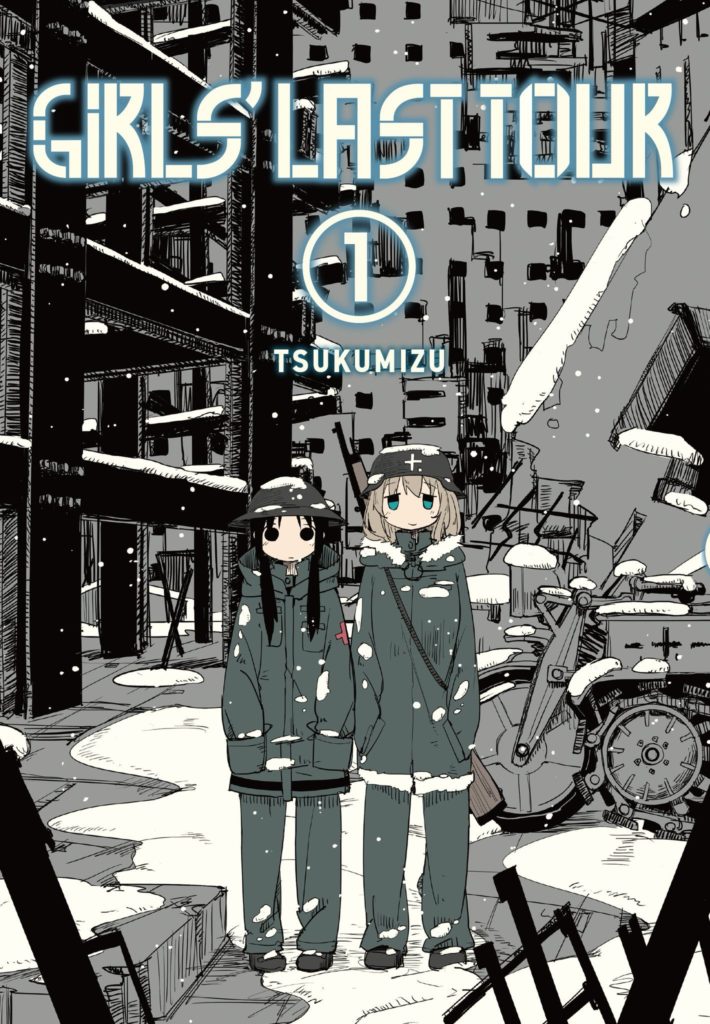
…and Sadako at the End of the World, by Koma Natsumi, also published by Yen Press.
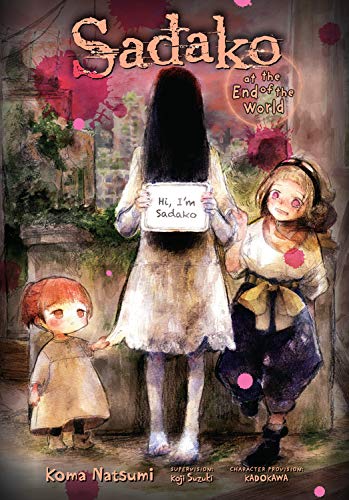
And that’s this week’s episode!
Thanks so much for reading and listening and supporting Mangasplaining! You can find a comics and manga specialty retailer near you at Comicshoplocator.com.
You can also check out our new publishing endeavour, Mangasplaining Extra, at http://www.mangasplainingextra.com.
And check out D.A.D.S. on Spotify, he made our cool theme music for us. 🙂
—
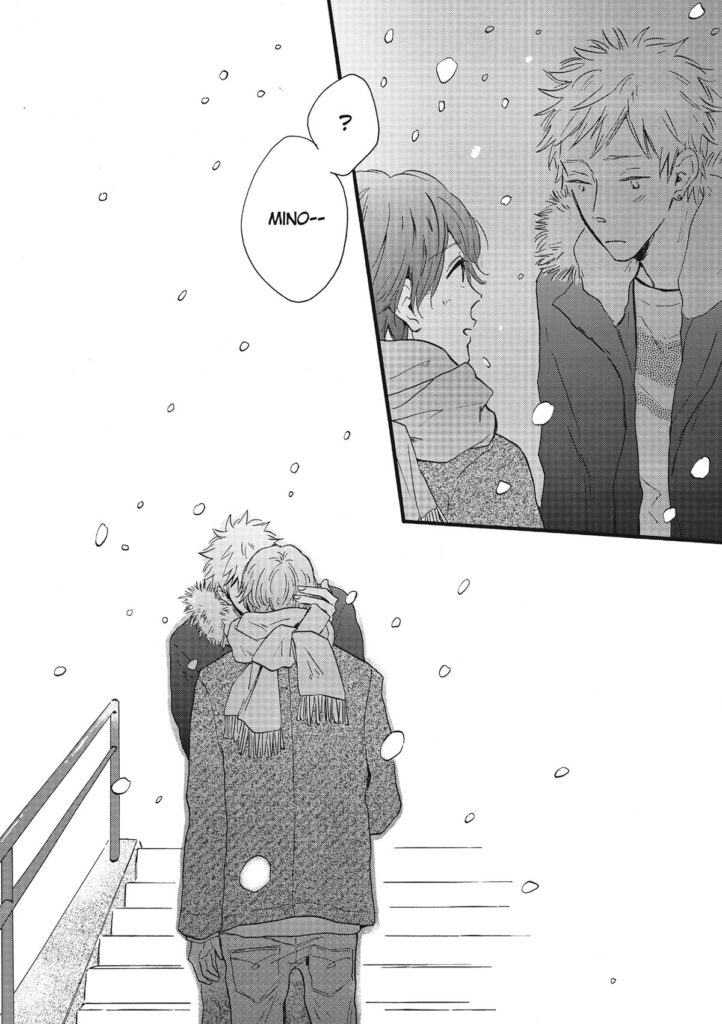
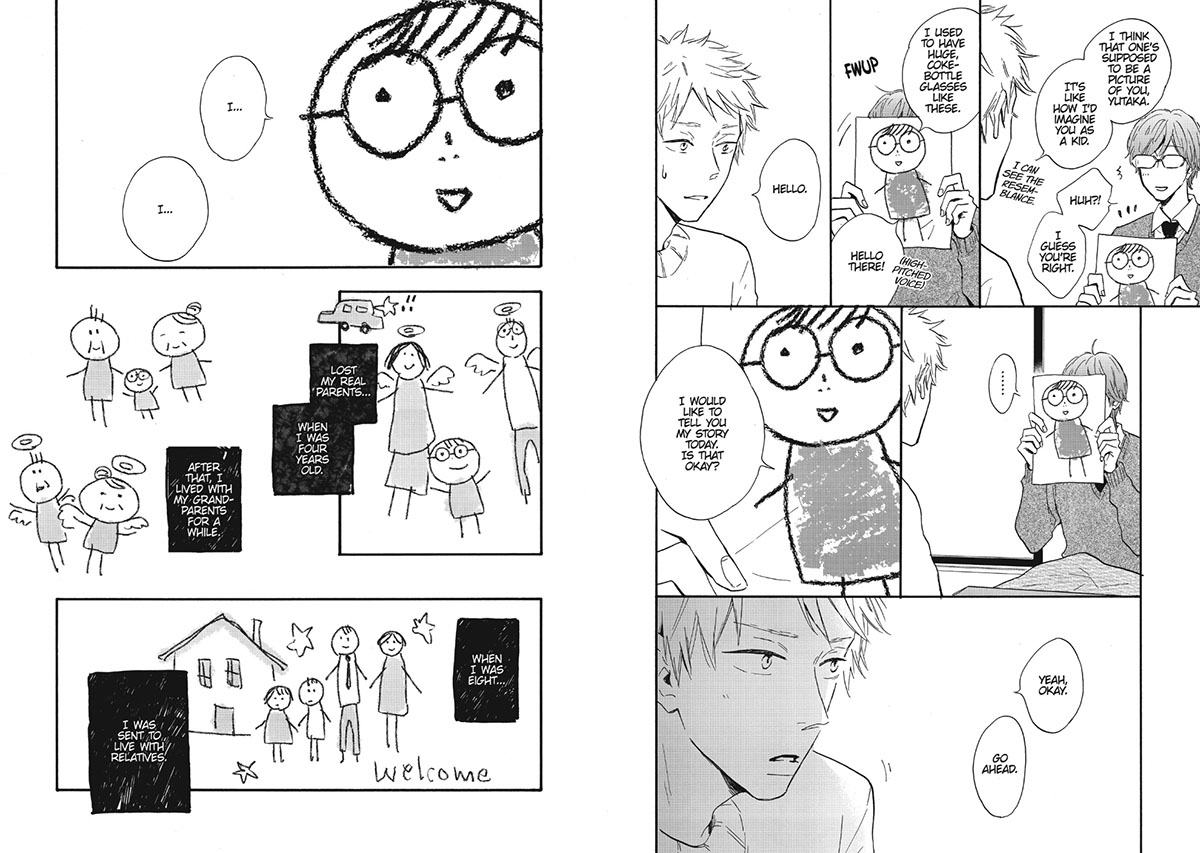
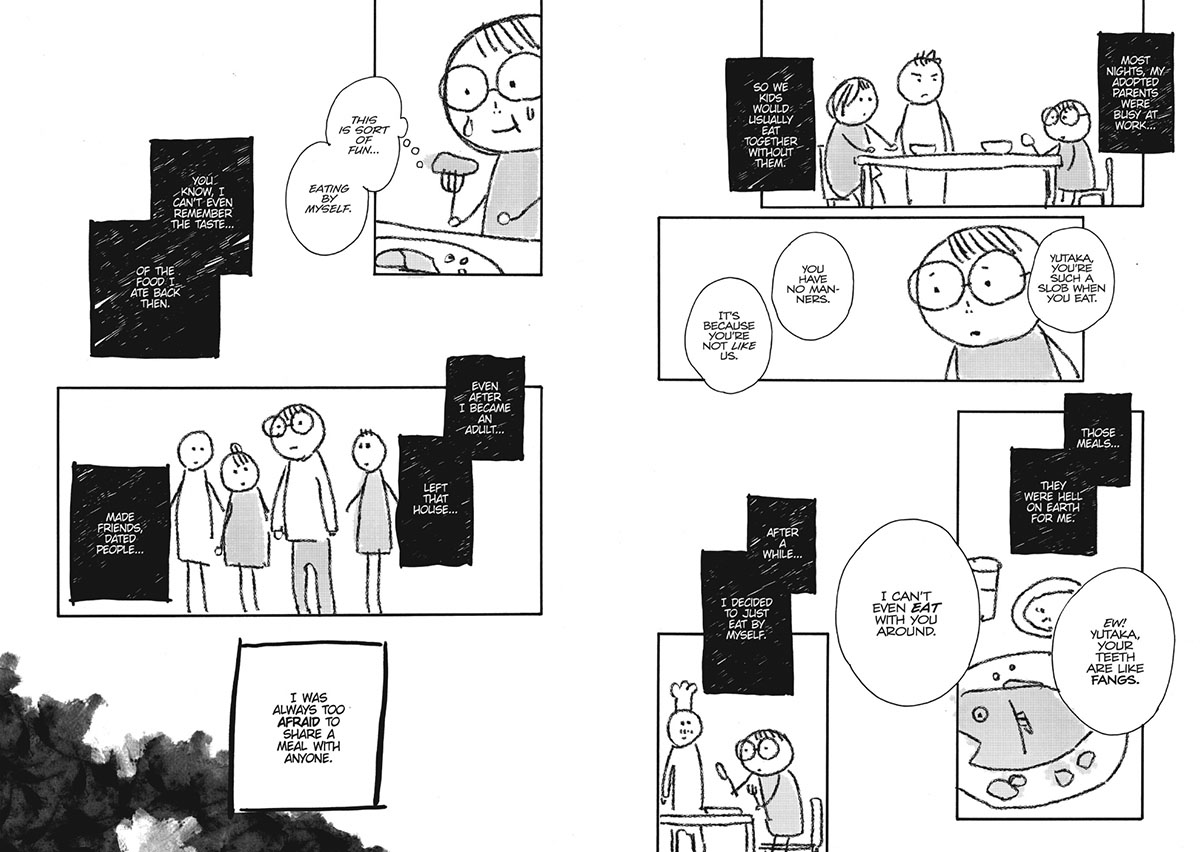
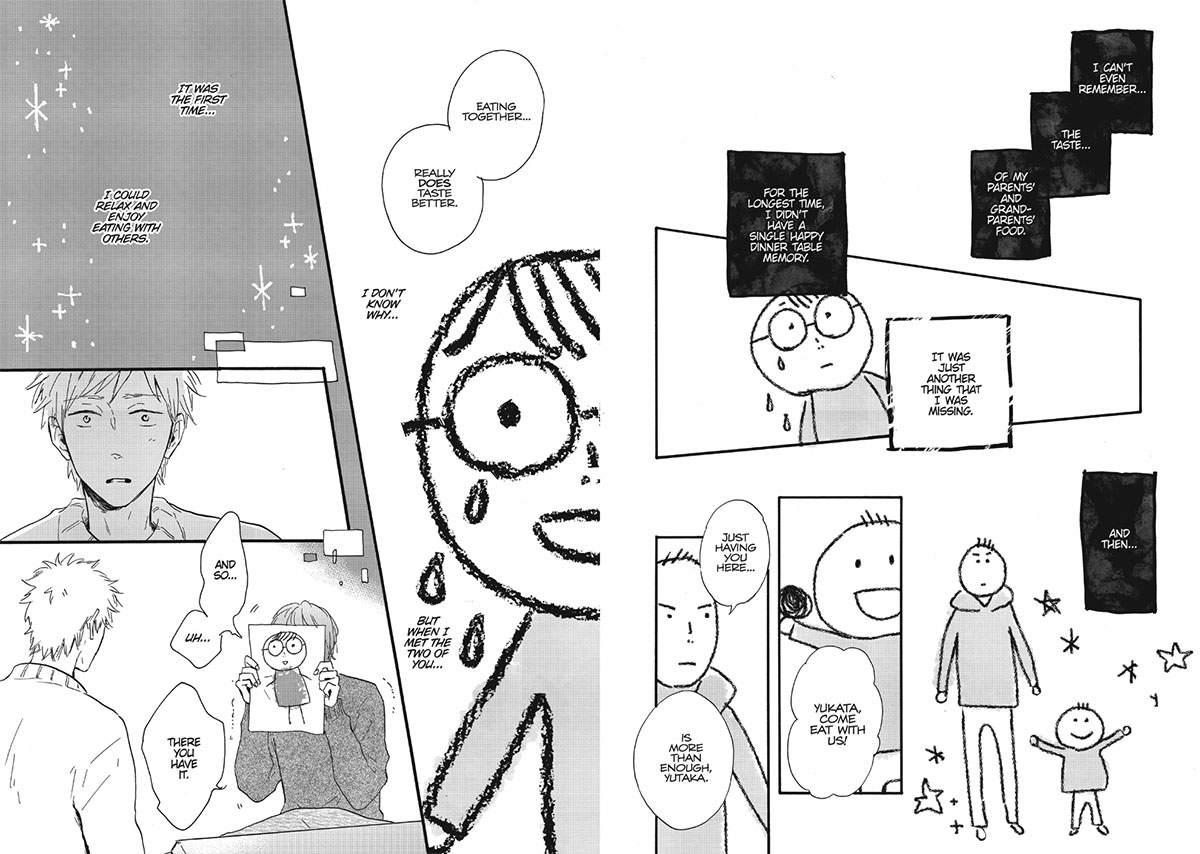
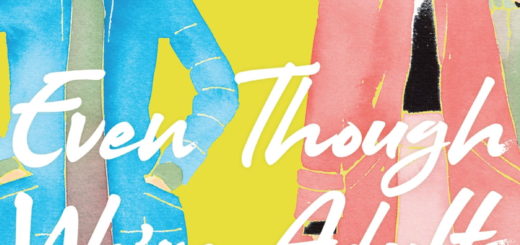
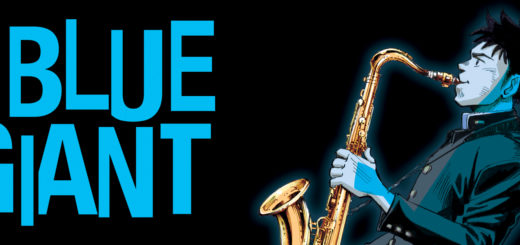
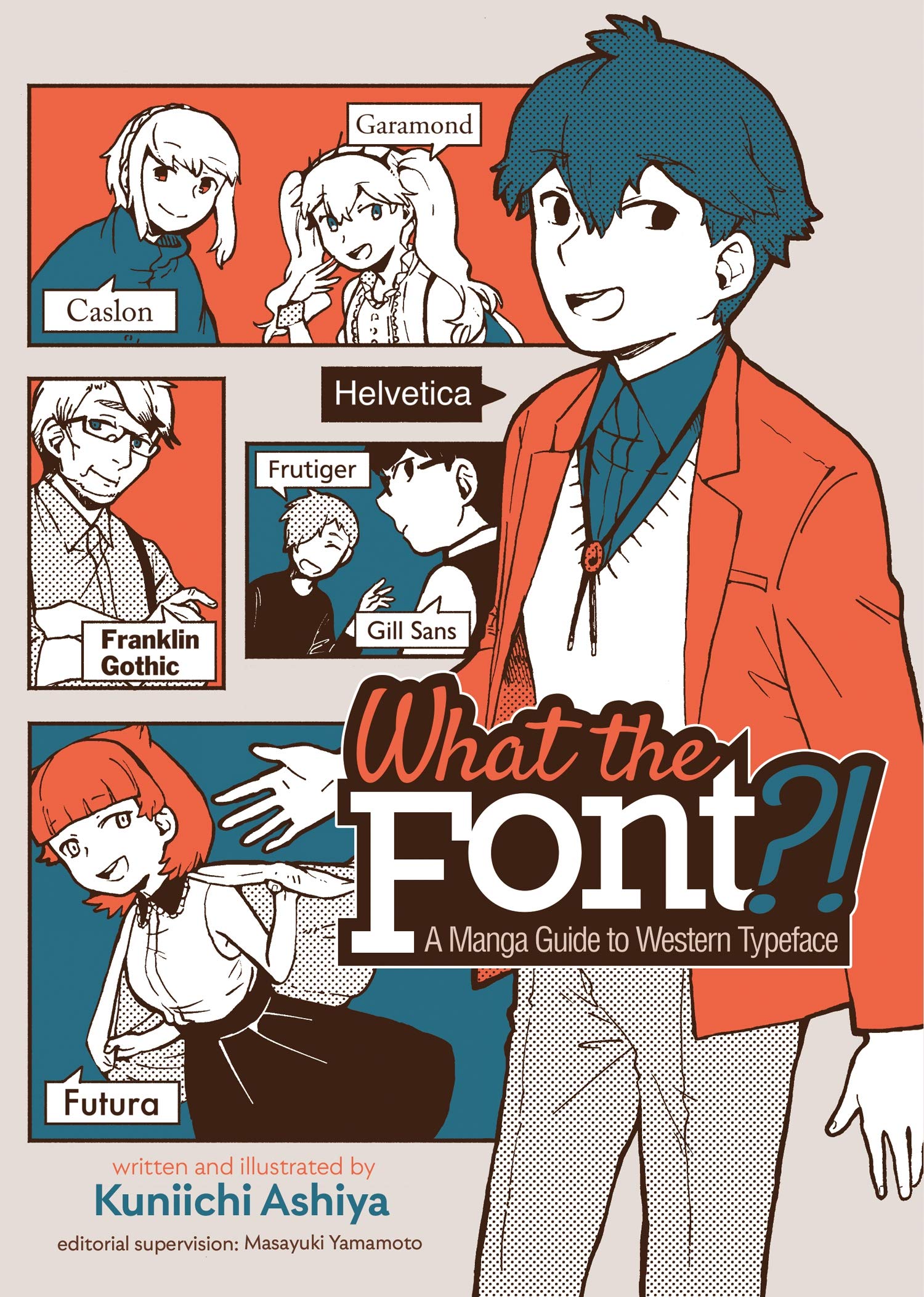
I’d been looking forward to this episode since I saw the schedule update in the sidebar, and it didn’t disappoint! 🙂 It was fun to listen to, and Deb’s comments in particular had me cracking up haha!
It was a pleasant surprise to see a mention of Minamoto Kazuki in the show notes. Two works by Minamoto Kazuki have been licensed in English by Futekiya Library, namely “The salaryman who has a fetish for suit gets horny (Suit Fetish Ri-man no Yokujou)” and “The Midnight Association For The Broken Hearted (Gozen Reiji no Shitsuren Doukoukai)”. You can read chapter 1 free of both series at read.futekiya.com. Both are two of my favourite titles on Futekiya so far.
Don’t like to promote BL…unless they do. The home of JGarden, Ikebukuro is also home to the Animate HQ (which is doubling in size right now, with the building next door being rebuilt as part of the honten) is also home to Otome Road and Bl fandom. And there is no lack of publicity for BL, BL-adjacent and BL-slashable series there! (I know you podcasters know this, but maybe some readers don’t.) There are cafes, and flyers and a floor of those darama CDs you mentioned. I love Yuri Drama CDs, so I get the appeal.^_^
I think all genres are tropey. I have a whole chapter about Yuri tropes in my upcoming book. It’s easy to make fun of them because they are the foundations of the genre.
Comparative Literature is my jam, and this podcast is exactly that for manga. Keep it up. ^_^
In regards to your 14:20 note about, it’s worth pointing out that a lot of her first stuff that got commercial English releases *is* actually pretty sexually explicit–so you don’t have to resort to scanlations. In fact, at first I just assumed all her work was pretty spicy, as the kids say. One-offs and short works like Ichigenme… The First Class is Civil Law, Truly Kindly, and Gerard and Jacques. But all of those came out, I believe in the mid and late 2000s (so really still the baby years of commercial English BL releases) and from defunct imprints like 801 Media. So it wasn’t until her longer, mostly far less explicit (and maybe more literary in the case of Ooku) works came out, starting with Antique Bakery and the excellent All My Darling Daughters anthology that I realized she wasn’t just known for high quality erotica–so I think someone discovering her now would view her work overall quite differently than I initially did.
(How was that for a long winded way of explaining that Yoshinaga first releases in English were all very gay porny…)
GREAT discussion! And yes, I made a LOT of notes from all the thoughts I had while listening to this (a BL leading me me on my own tangents in the comment section here–shocking, I know). So sorry about the length… (And, to no one’s surprise, I have zero thoughts about Deadpool Samurai, but I did like hearing about it.)
The BL moniker still kinda weirds me out, even though I *know* it’s been commonly used in Japan for 20 or so years. When I was really excited by the stuff as a young gay guy in the 90s, I was told by Japanese and Western fans alike that the terms to use were shonen-ai or, when pornographic, YAOI. As I hit my twenties, and a LOT more BL stuff became available, I realized that at least 75% didn’t do it for me and paid less attention to most of the trendy stuff, focusing more on works with more “real” (if that word can be used) depictions of gay characters like Hagio’s masterpiece Cruel God Reigns, Wakisato Akuni’s huge 80s hit for Petit Flower Sleeping (Male) Beauty/Tomoi or Marimo Ragawa’s New York, New York (which is like Fake, the manga you mention, if Fake were actually genuinely both good and hot!)–did I mention in previous notes that Yen Press is releasing NY NY next month in English?? Well in case I may have forgotten…
A friend of mine who I consider an authority on shoujo manga (she grew up reading all the 70s masterpieces, and has worked extensively both on books devoted to shoujo mangaka and museum exhibits in Japan) told me that in Japan the terminology changed from shonen-ai to BoysLove because (get this…) shonen-ai started to pick up connotations of pedophilia. But, I guess because it used English loan words, BoysLove somehow avoided that. Anyway, her theory makes as much sense as anything, but I still find BL awkward when I use it…
You’re not kidding by the fact that illegal manga fan translations owe a lot to this genre—again as a young teen, somehow I found a group, mostly run by young adult women, who would release at virtually no charge monthly fan done photocopied translations of various YAOI doujinshies by the star mangaka in the field at the time like Minami Ozaki. Ozaki kinda redefined what modern BL would become in the 90s with its own magazines like Be x Boy, but her first non doujinshi hit, Zetsuai 1989 and its sequel Bronze ran well over a decade in Margaret magazine and was always far more racy than, say, contemporary Margaret “straight” romances like Boys Over Flowers. (However, it did start off as a Captain Tsubasa doujinshi that was itself far far more explicit.) I think a lot of Western fans who discovered BL in the mid 90s also know Zersuai/Bronze via its OVA (which admittedly seemed extremely racy to me at the time, but now seems tame and kinda boring, even if it obviously influenced a lot)—that and a few other YAOI OVAs (Kizuna, Ai no Kusabi, and the truly so-bad-it-had-to-be-seen Boku no Sexual Harassment with its infamous bottle scene) and their fansubs probably are the first experiences with the format for a lot of non-Japanese people my age.
So I’d argue your point that these fairly explicit sex filled BL (or whatever you would call them) titles didn’t run in mainstream shoujo magazines. In fact, going back further, Takemiya’s Kaze to Ki no Uta in 1976 opens with a full on sex scene and, essentially taking what Hagio had shown chastely in Heart of Thomas, making it explicit. And that ran in Shoujo Comic. Part of what still shocks about Kaze, of course, is that a lot of the sex is abuse/rape (and intergenerational) but the actual depiction would still raise a lot of eyebrows. I should point out, though, that one reason Shogokakun created Petit Flower (now Flowers) in 1980 was to move Kaze (and work from Hagio and others) there to a magazine explicitly aimed at a proto-josei audience where they could be more explicit. But regardless, historically same-sex titles running in standard shoujo magazines seemed allowed to be far more sexually graphic than hetero titles.
(And just a heads up if anyone islooking—Fantagraphics hasn’t reprinted Heart of Thomas yet, the link above just goes to their 2013 page—it’s been pushed back due to the supply chain but I have been told it WILL be reprinted sometime after Poe Clan vol 2 which is set for this July).
As for current BL titles that I really like—I do think anything Fumi Yoshinaga is always worth reading (and of course when I first picked up Our Dining Table, my immediate mental connection was to her manga What Did You Eat Yesterday?)
As was covered in the Jocelyn Allen Mangasplaining, Nakamura Asumiko’s Classmates and its various spin-offs, really makes me happy even if it’s basically all character with only a few melodramatic moments to push things forward. For anyone who has read Asumiko’s other BL stuff, both doujinshi and commercial, which is, well, full on YAOI, it might seem odd how chaste Classmates is (well aside from a few “semen gets in the strangest places” jokes…) because those titles are almost like messed up YAOI parodies, but I gather it was her intention to try to do something relatively straightforward and realistic.
A title I kinda resisted for a while, because it has SUCH a following (yeah, I’m one of those manga fans) is Natsuki Kizu’s Given. I mean it even had, after only a few volumes, a mainstream TV anime (on the NOITAMINA block, no less) and film. But a friend convinced me to give it a go, by saying that the subtext behind a lot of the characters actually reminded her of Moto Hagio’s work (and she’s not wrong—Kizu even acknowledges the influence) and I’ve become a big fan, even if Kizu’s art suffers from one issue—I often can’t tell certain characters apart and have to jump back to make sure I know who is who…
Out of the, as Deb says, smutty titles, a lot of the stuff that is coming out now in English doesn’t really appeal to me. Mostly not out yet in English but out in French are some of the extremely over the top YAOI titles from Haruko Kumota. She plays into all the BL porn tropes, but there’s always a sense of fun and enjoyment with her characters (don’t get me wrong, I like angsty YAOI too, but this is refreshing). Jocelyne Allen has blogged about her works a fair amount, and actually her blog on Kumota’s Shunjuku Lucky Hole reminds me that the first volume is out online in English via Futekiya https://brainvsbook.wordpress.com/2020/06/26/shinjuku-lucky-hole-kumota-haruko/
Finally, while there are obviously so so many proto BL classics I’d love to see in English (did I mention we’re finally getting New York New York? Oh, maybe I did). And a lot of modern works that are technically shoujo or josei and have heavy gay content but I wouldn’t classify as BL (including a lot of Hagio’s recent work, or Takemiya’s last major work, the harrowing Heian Joururi Monogatari set in feudal Japan… The first recent BL title that I would kill to have in English, is Teki Yatsuda’s Home Far Away/Haruka Tooki Ie. I could see it being picked up as it ticks most of the major current BL boxes, but it also in some ways feels thematically like a throwback to those classic Hagio titles, but with elements of Banana Fish (let’s not even get started about how to classify BF) as well as a very current take on how damaging it is to grow up gay in a religious fundamentalist household. Oh and it has a fair amount of sex and is just one volume long. License it already!
As always, thanks for a great podcast discussion (which, also as always, led me on a book length tangent) and such detailed notes. I echo what Erica said above, about the great comparative lit aspect of all of this.
David’s Bleach comparison with the characters… WOW. I knew they looked familiar. And I totally didn’t know about the Naruto voice actors’ BL drama CD. Gonna have to look that up. Once again Mangasplaining shows it drops the best factoids about cool and random stuff.
Between this episode and these show notes and Eric’s comments, I feel like I just earned a doctor’s in BL manga. You dance around a few of these topics in previous episodes, so I’m glad “Out Dining Table” presented the opportunity for such a in-depth introduction. I had no idea BL was so recent a development, but thinking back over the years to sectioning of the larger bookstores, I guess I saw that evolution in real time. It makes total sense that the dojinshi scene was the impetus behind it. That seems obvious now, but something I had never considered. I do find it interesting that gay friends of mine have leveled similar criticism toward BL. It’s very much in the vein of being offered cotton candy to eat when you’re hankering for a full-on meal, as there’s more to being gay–especially with the acceptance of that varying greatly by geographical location–than wondering if the other person likes you or no. I cannot speak to that experience, but the closest I could come to that situation is when I’ve encountered romance in fiction that solely focuses on the ups and downs of the emotions and not any of the vicissitudes of life that would in reality have an outsized impact on that romance. (E.g., hard to have a wedding if the two you don’t have the finances for that.) Anyway, looking forward to seeing how the conversation evolves as you read other types of BL for the show!
Let me tell you something about drama CDs. I don’t know how many times back in the day I thought I had found a long lost gem of an anime soundtrack only to discover it was a drama CD. It’s something I really don’t get, because, as far as I could tell, the majority are the voice actors playing the characters from the show, but in a setting that has nothing to do with the show’s continuity, like the entire cast of Gundam but they work at a coffee shop. I guess if you ever said to yourself, “I could listen to Actor X read the phone book,” a drama CD would be the thing for you. My ears do tend to perk up when I hear Norio Wakamoto, the voice of Cell from Dragon Ball Z, narrating a TV show, so I kind of get the appeal, but never thought about going deep on the how’s and why’s of drama CDs.
Of all the manga that would tear our hosts apart, I never in a million years thought it would be a Deadpool manga. I do get what Christopher was saying: Not knowing which Deadpool you’re getting can affect the level of enjoyment you get out of it. My personal Deadpool pet peeve is his association with chimichangas. I guess I don’t find the word as inherently funny as who first put it in Deadpool’s mouth, and I hate that every version of Deadpool has to pay lip service to it. The reference alone feels dated, and that should be enough to never have the character utter it again.
Thanks to David for those two shout-outs. That “Sadako at the End of the World” is just the type of weird that’s up my alley. Fingers crossed it’s better than than “Sadako vs. Kayako.”